Search everywhere optimization (some call it SEvO) means making sure people can find you no matter where they’re looking online.
And here’s the thing: they’re not just looking on Google anymore.
People are turning to TikTok for product suggestions, digging through Reddit for brutally honest reviews, and asking ChatGPT for personalized shopping lists and recommendations—often in the middle of conversations about their personal or professional challenges.
They’re searching where they already spend their time, hunting for the kind of authentic, unfiltered content that traditional search results sometimes miss or asking AI for help with choosing from too many options in a field they don’t know much about.
So, while traditional SEO asks, “How do we rank higher on Google?” Search Everywhere Optimization asks, “Where is our audience actually looking, and how do we show up there?”
Let’s explore the five platforms where your audience is actually searching, and how to show up authentically on each one.
AI traffic to websites has grown 9.7x in the past year, with 63% of websites now receiving AI-driven traffic that can convert even 23x higher than traditional organic search traffic. ChatGPT alone had 500 million weekly users in April 2025 and growing fast.
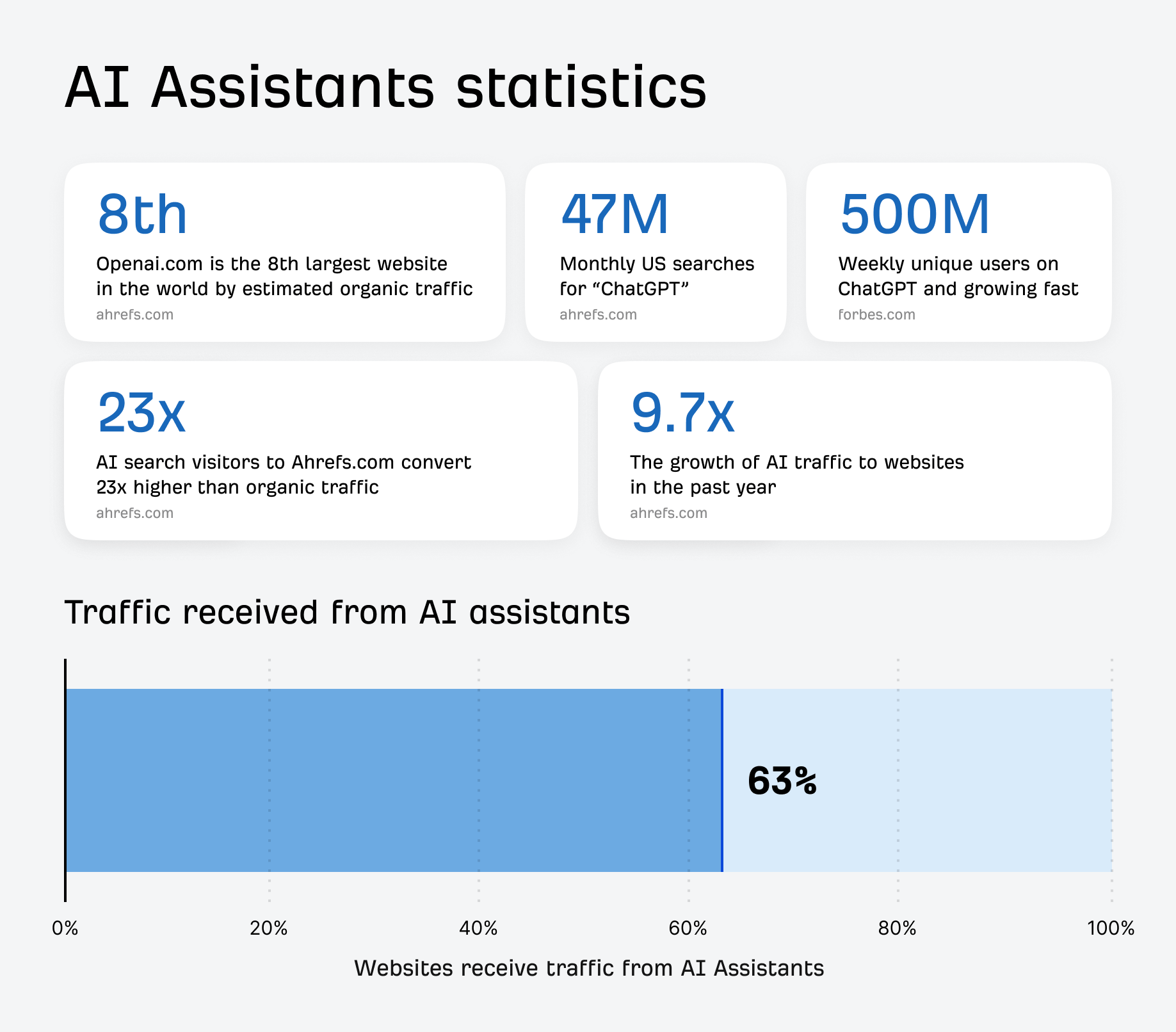
When people need to solve complex problems, compare detailed specifications, or learn something new, they’re increasingly turning to AI assistants like ChatGPT, Gemini, and Claude.
Unlike traditional search, AI can synthesize information from multiple sources, create personalized recommendations, and provide step-by-step guidance tailored to specific needs.
For example, when I asked for the best laptop for a Ph.D. student in computational biology—complete with a list of specific personal needs—Perplexity reviewed 20 different sources to come up with a recommendation. Honestly, going through that many sources on my own would be exhausting. That kind of research is exactly the kind of task I’d gladly hand over to AI every time, instead of Googling.
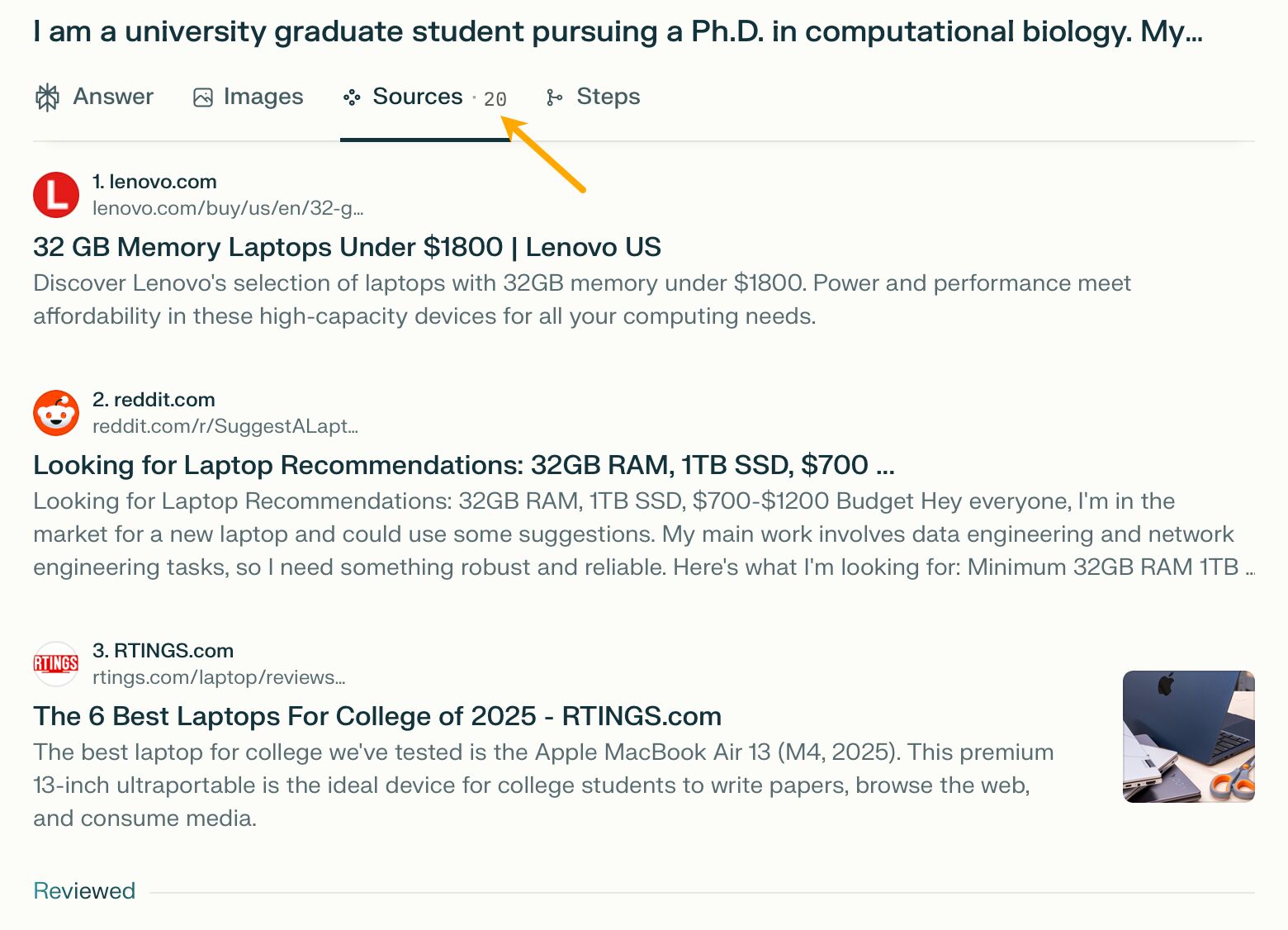
Core optimization principles
As of now, there’s still an ongoing—and likely long-running—debate in the industry about whether optimizing for generative AI search engines is truly different from traditional SEO, with its own unique set of rules.
The web feels like it’s in a bit of a panic. AI Overviews and assistants are starting to pull traffic away from websites, and some are declaring that “SEO is dead.” The new buzzword is Generative Engine Optimization (GEO), and some people are saying you need to drop everything and start learning this brand-new playbook.
But here’s the thing: every time I try to break down the discussion and look for clear, confirmed facts, I end up with a list of strategies that look a lot like what SEOs—ourselves included—have been recommending for years. At the end of the day, it all comes down to:
- Develop brand authority signals across the web. AI models recognize and weight authoritative sources more heavily. Build mentions, citations, and references across reputable sites to establish your expertise in AI training data and come up more often when AI assistant use search to refine their answers(yes, ChatGPT actually Googles things).
- Build comprehensive, authoritative resources. AI assistants favor detailed, well-researched content that covers topics thoroughly. Instead of thin content, create definitive guides that AI models will want to reference and cite, aka deep content.
- Create content that is easy to digest. Structure your content with clear headings, bullet points, and factual statements that AI models can extract and reference.
If you want to learn more about the intersections between Search Engine Optimization and Generative Engine Optimization, dig into our two articles:
That said, the AI era is definitely bringing some shifts to how we approach marketing. In a recent webinar, our very own Patrick Stox highlighted two key points about SEO for AI assistants:
- SEO itself hasn’t drastically changed, but getting good results may now require closer collaboration with other teams like PR and partnerships.
- And a word of caution: don’t try to game AI systems. With major updates happening every few months, the safest bet is to focus on delivering real value. With major updates rolling out every few months, you never know when a shortcut could come back to haunt you. Focus on real value—it’s the safest long-term strategy.
The full webinar might be the most insightful thing you’ve seen so far on the topic:
How can you tell when or how AI is mentioning your brand? AI assistants themselves don’t provide such data, so you will need an AI monitoring tool like Brand Radar. Here are a few ideas.
First, you can monitor where your brand is mentioned online and contact sites to correct or update any outdated information.
Once you enter your brand in Brand Radar, click on AI responses, set the AI type, preferred location, and sort by search volume (for AI responses with the biggest reach).
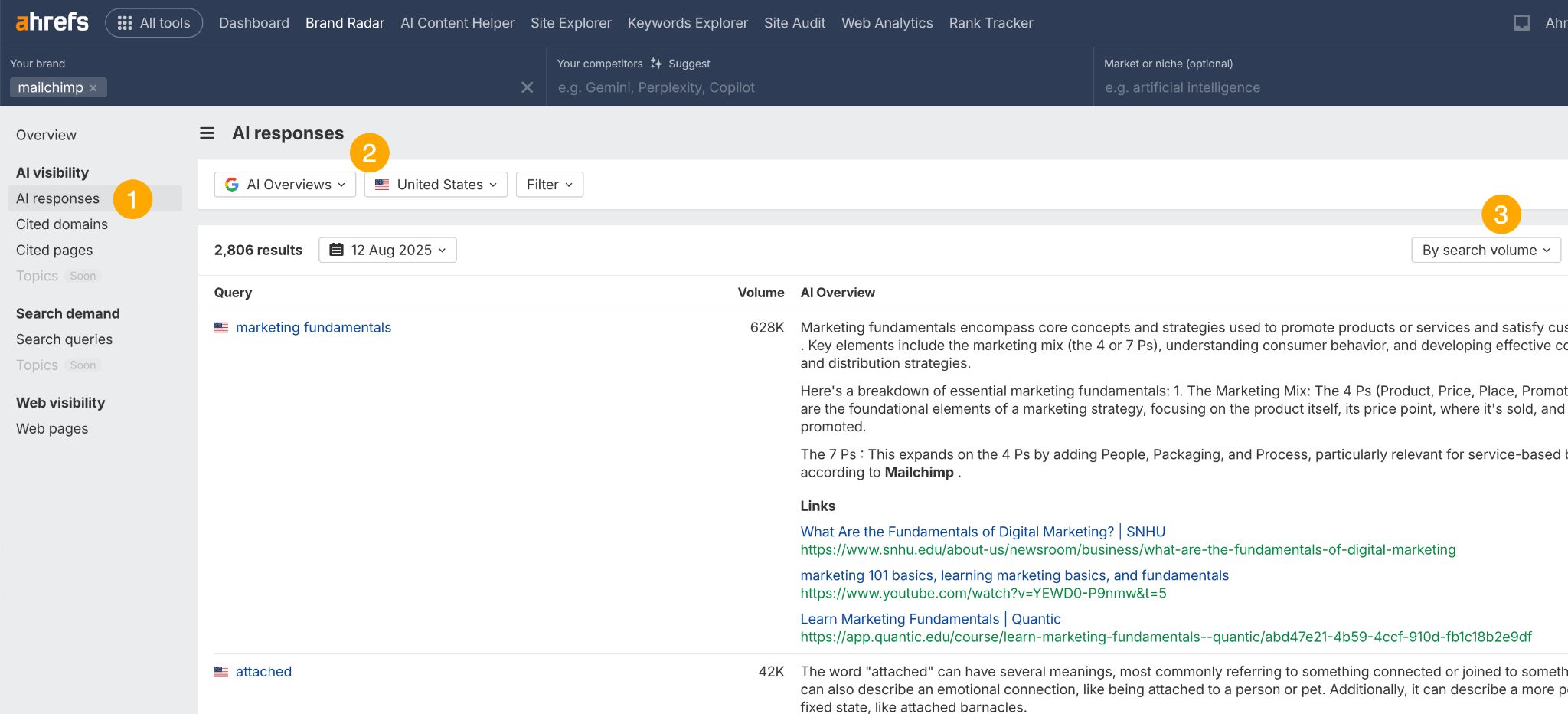
Next, you can dive into competitive analysis.
To find pages that mention your competitors but not you (your AI mention gap), add your competitors to Brand Radar, hover on any AI chart, and click on “Others only”.
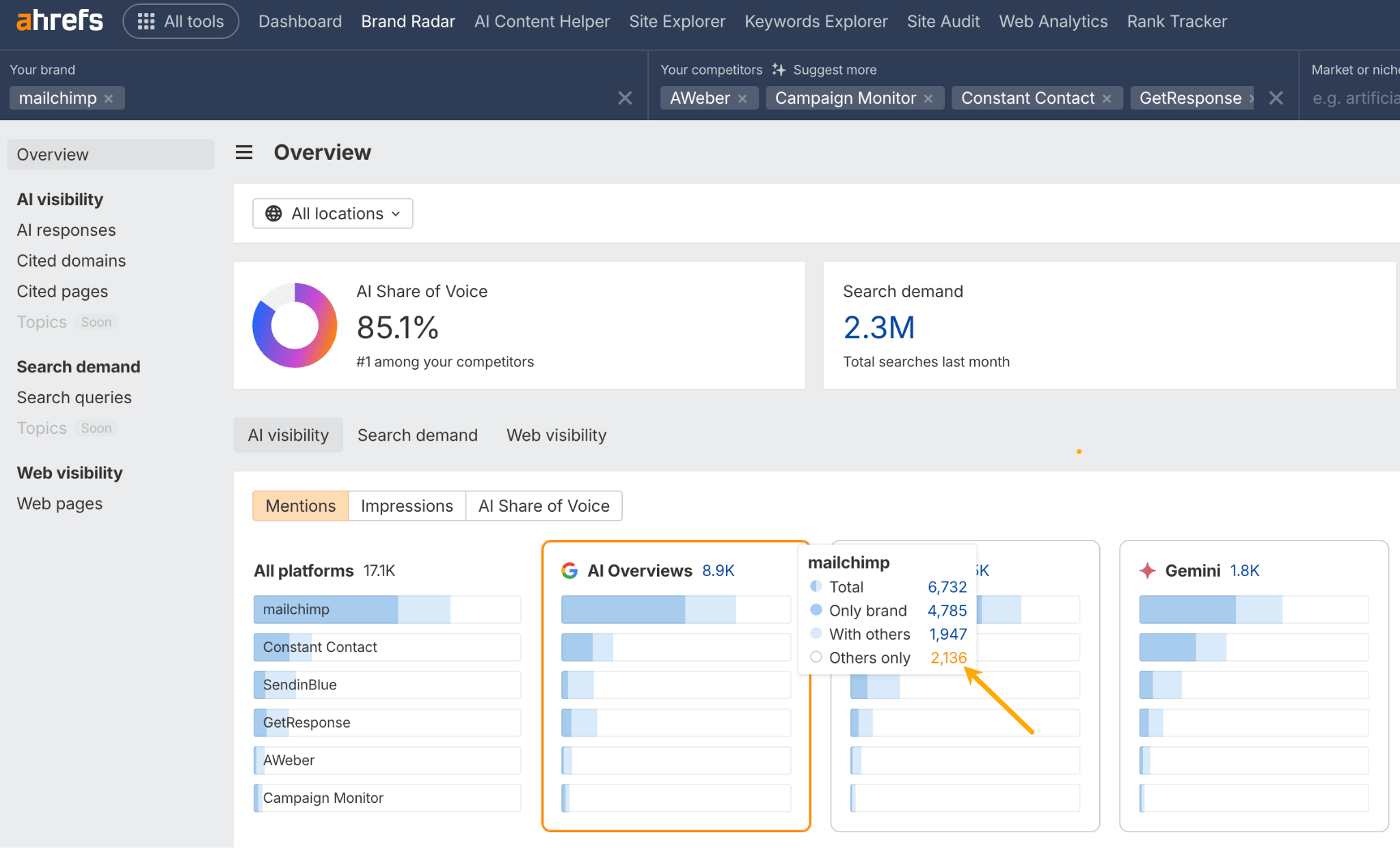
Next, click on the Cited pages report to see websites you could reach out to close your AI mention gap.
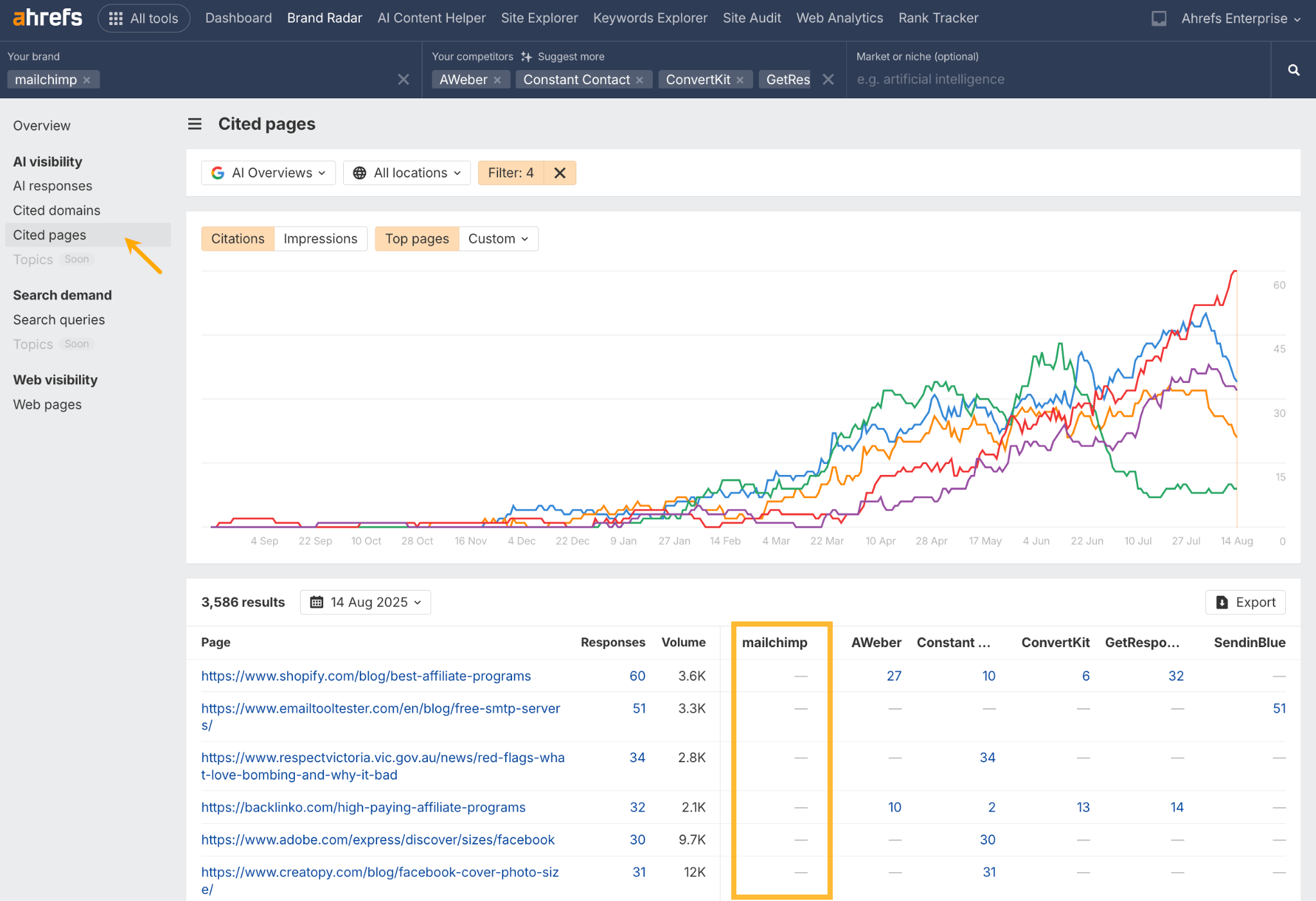
To fix your AI citation gap (when your competitors are cited in AI answers but you’re not), start by clearing all the top-level filters. Then, go to the Cited pages report and apply the lower filter shown in the screenshot below. This will give you a list of pages, showing how many AI responses they were mentioned in and the total search volume of those queries.

Next tip. According to our data, Reddit pages have been cited over 12 million times in AI Overviews and AI Assistants.

You can use Brand Radar to spot which Reddit threads are being featured in AI Overviews and assistant answers. From there, jump into the conversation or share useful posts to shape the sources AI relies on.

This approach also works for Quora, which shows up in around 3.4 million AI Overviews, giving you plenty of opportunities to influence what AI surfaces.
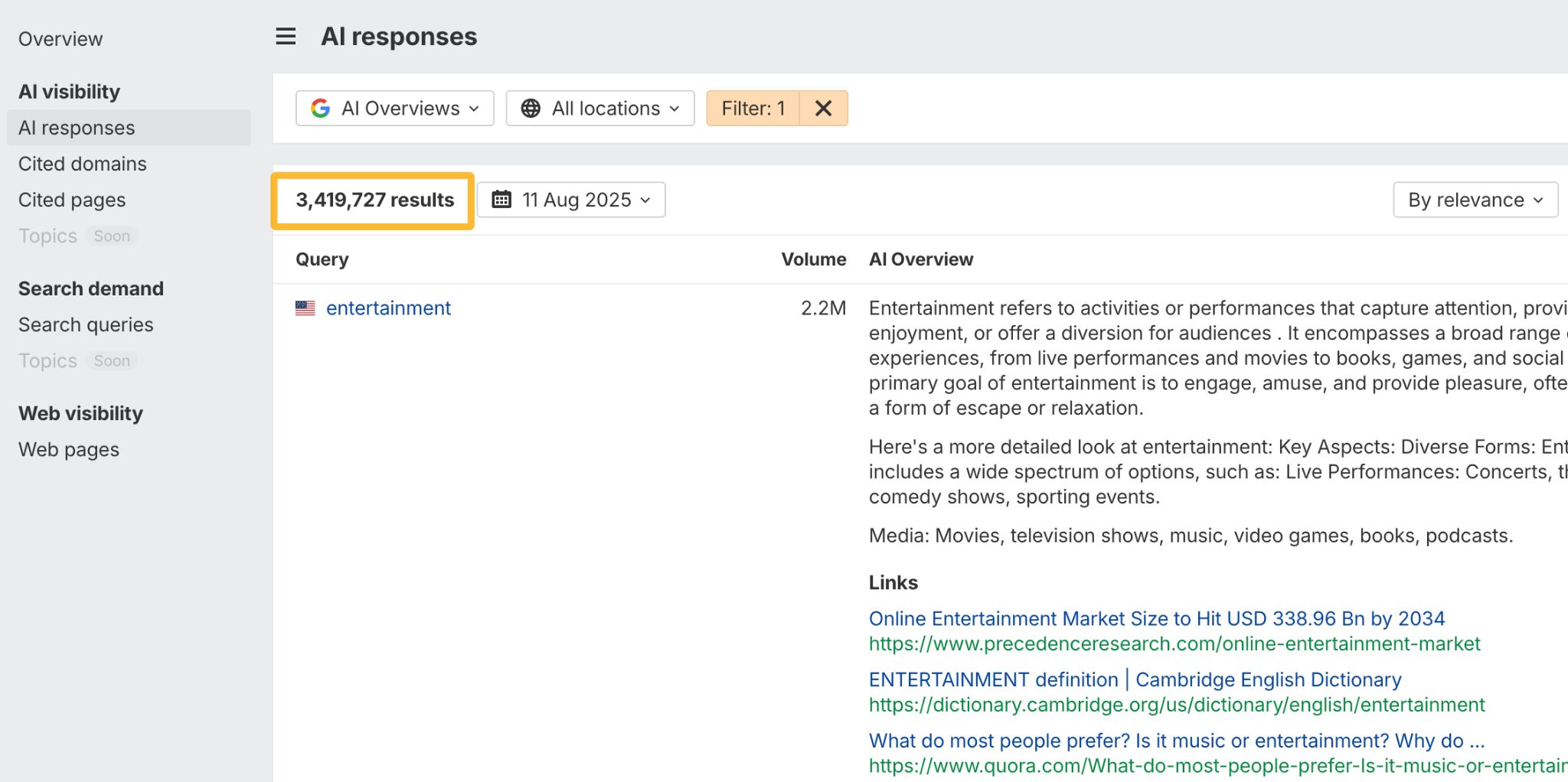
YouTube reaches 2.5 billion monthly active users with 3.7 billion monthly organic visits, where users are 3x more likely to watch tutorials than read instructions, and the majority of viewers have purchased products after discovering them on the platform.
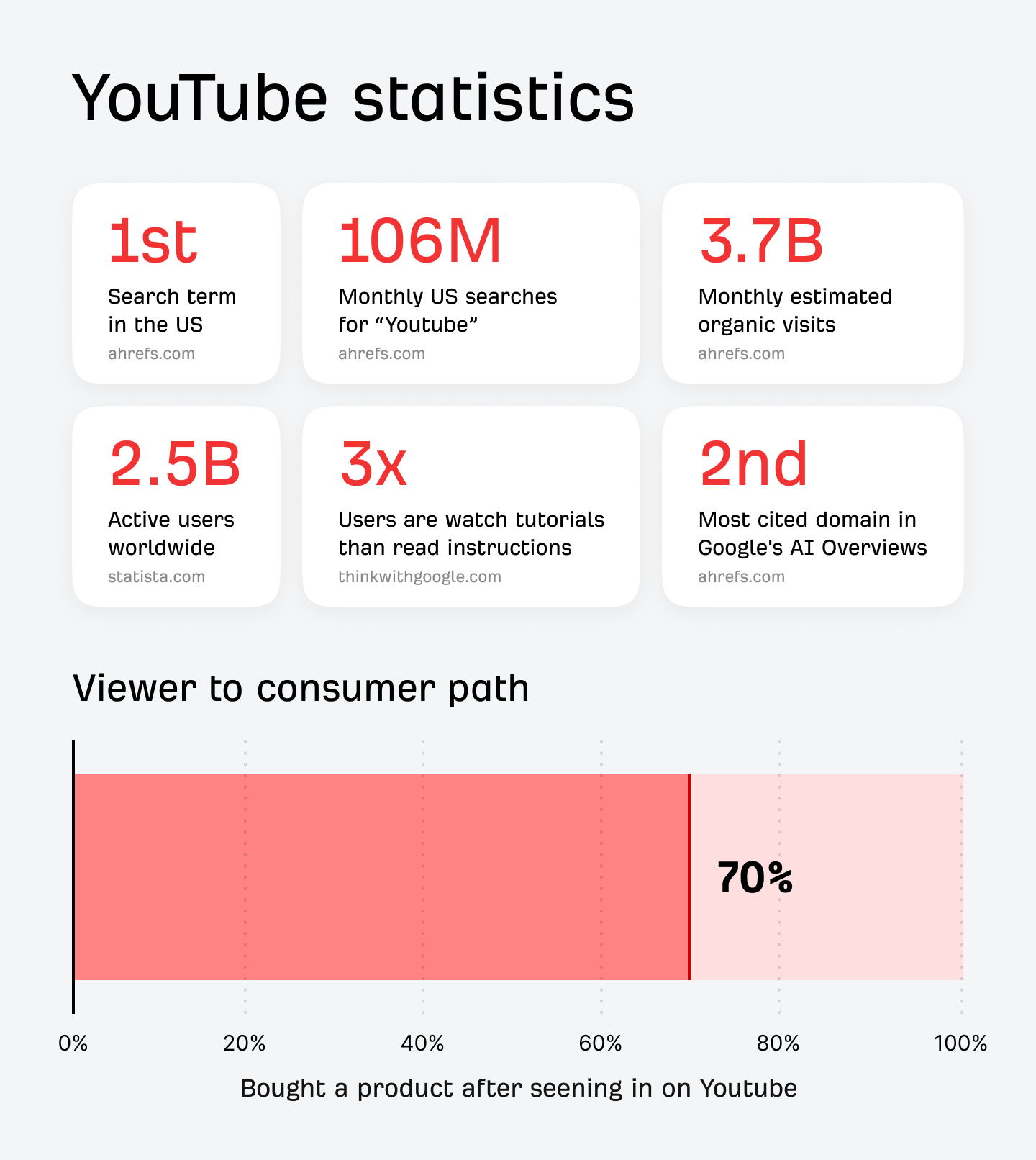
Google might tell you the steps for a recipe, but YouTube shows you what the batter should actually look like, how the sauce should bubble, and what “golden brown” really means. You see the mistakes, the corrections, and the final result.
Plus, in many cases, visual learning simply trumps text. A 10-minute YouTube video about investing feels more digestible than a 2,000-word article, even if it contains the same information.
YouTube always surprises me with what kind of content takes off. I used to think tool reviews were more of a written thing, but there is this couple who run a YouTube channel doing just that, and they’re actually doing really well with it. It’s their full-time job!
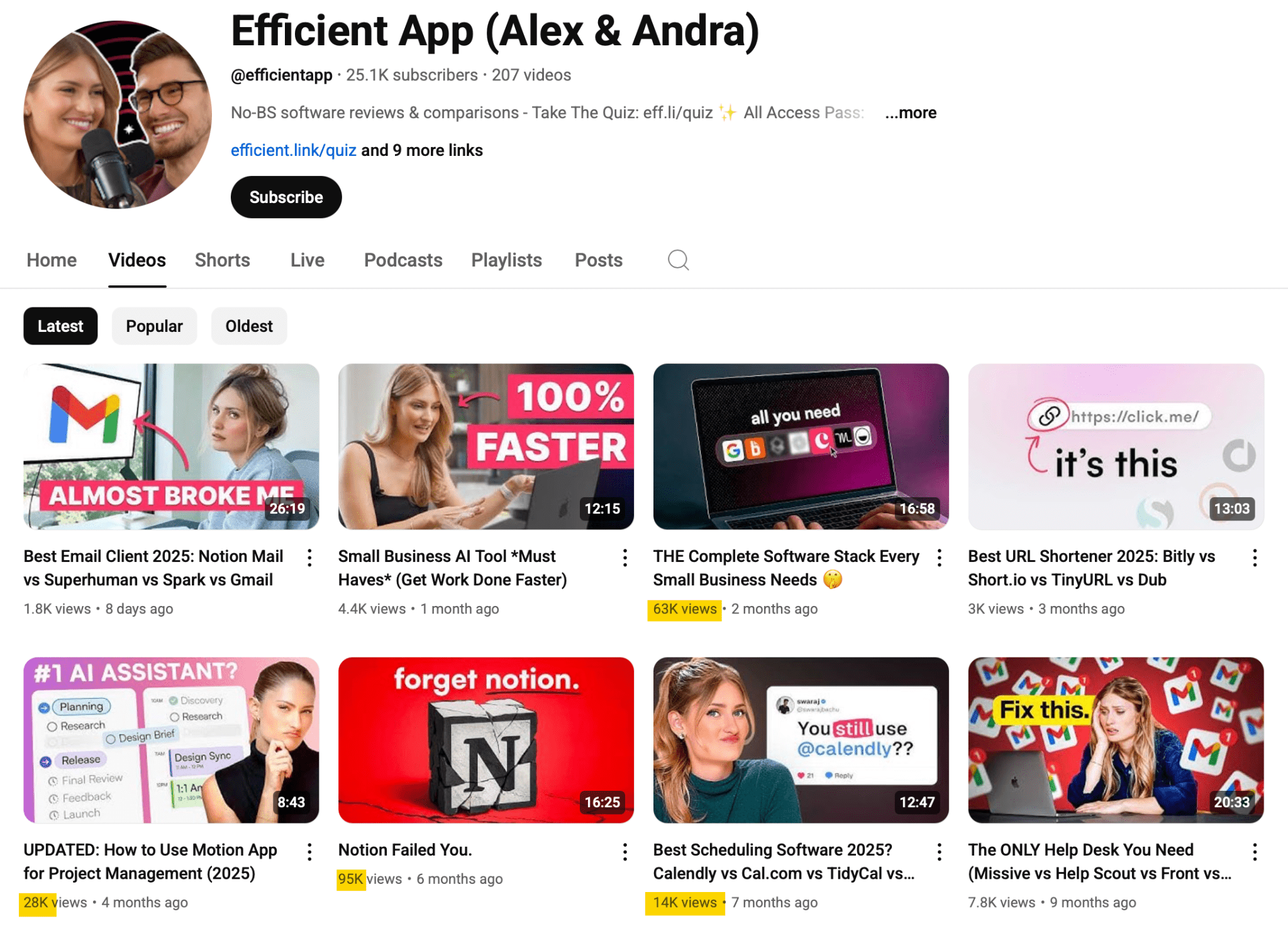
Core optimization principles
While features like Suggested and Browse usually work better once you’ve built an audience, YouTube SEO is key for getting those first views. Search traffic is super reliable, often brings in steady subscribers, and tends to have higher average watch times.
We’ve put together a complete guide that walks you through our video SEO strategy—the same one that helped us earn over 5.7 million organic views and 642,000 watch hours in 2024 alone.
- Mastering YouTube keyword research using Ahrefs, YouTube autosuggest, Google Trends, TubeBuddy, and vidIQ (plus why search volume estimations can be misleading).
- Strategic topic selection by analyzing top-performing video formats and competitor channel authority to find realistic ranking opportunities.
- Creating high-retention content with proper scripting, natural keyword integration, and engagement hooks that keep viewers watching.
- Complete optimization checklist covering video file names, titles, strategic tags, descriptions that capture “key moments,” compelling thumbnails, closed captions, and strategic cards/end screens.
- Promotion strategies for driving initial views, from Reddit and Quora sharing to cost-effective YouTube search ads.
With over 400 million weekly active users generating 952 million monthly organic visits, Reddit dominates product review discussions, appearing in 77% of product review searches on Google.
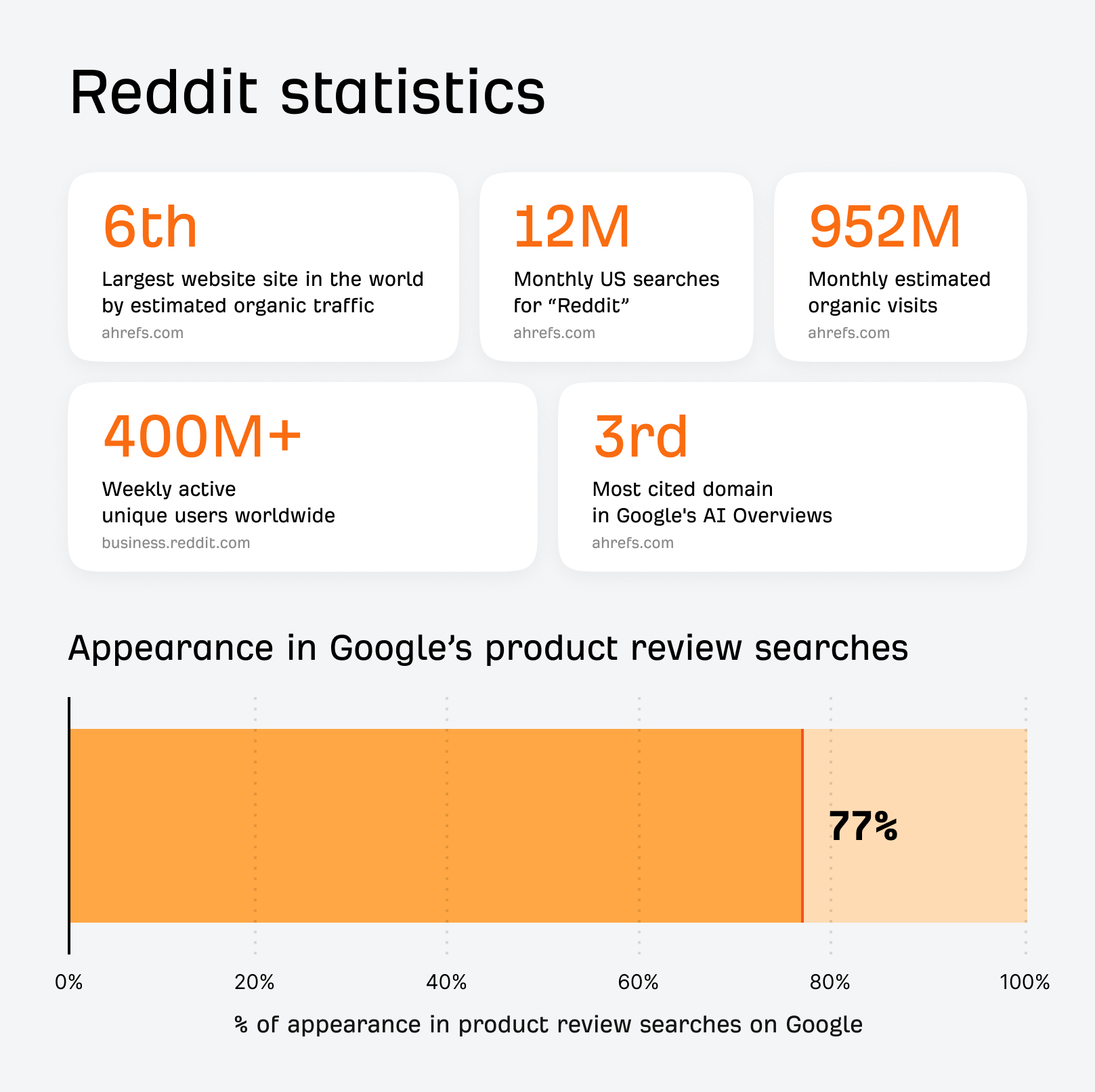
When people want the real story—not the marketing version—they head to Reddit. It’s where you’ll find brutally honest product reviews, unfiltered advice, and communities discussing everything from skincare routines to enterprise software decisions.
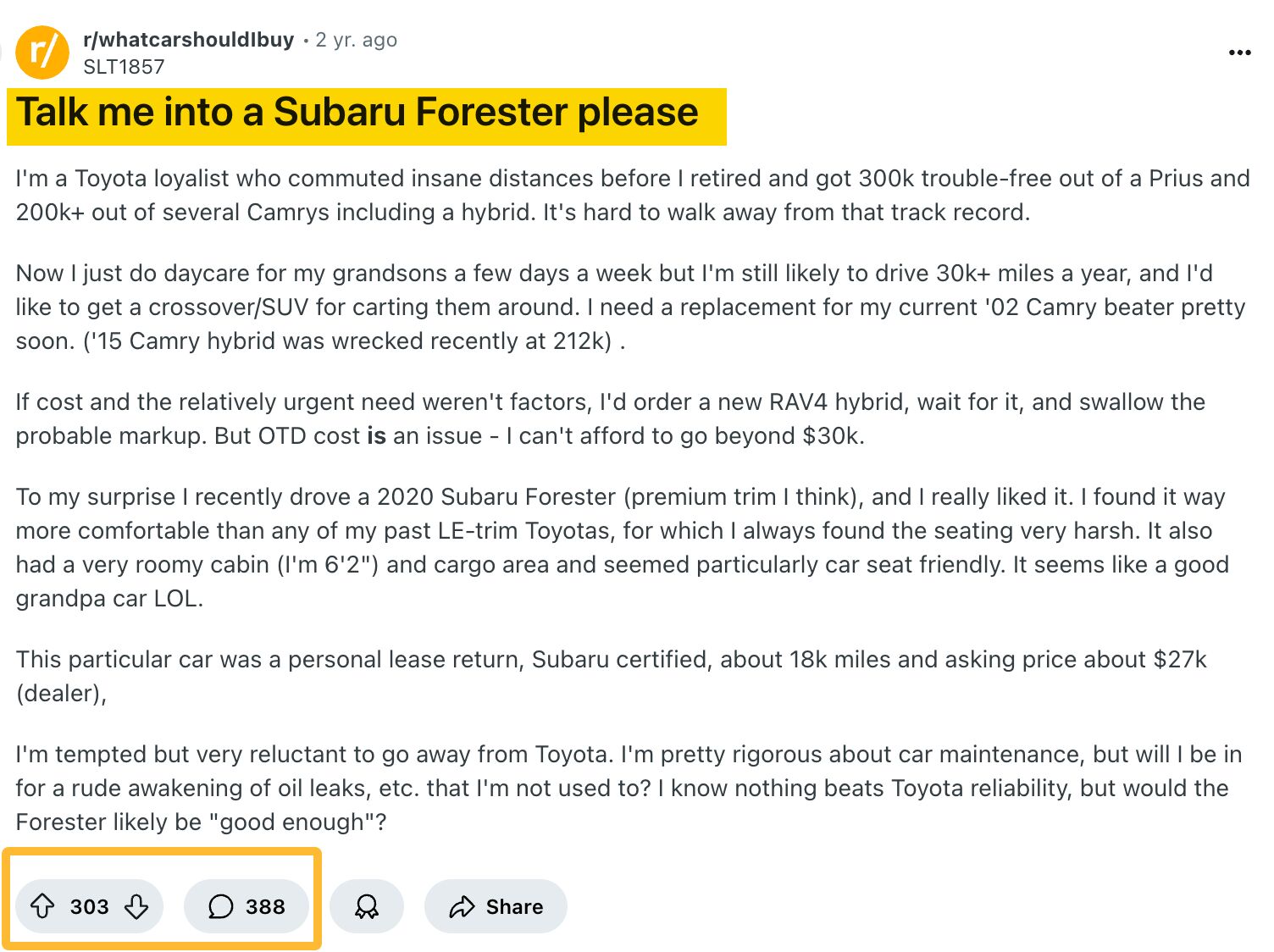
By the way, that’s where we’ve been going for the past 10 years for product feedback.
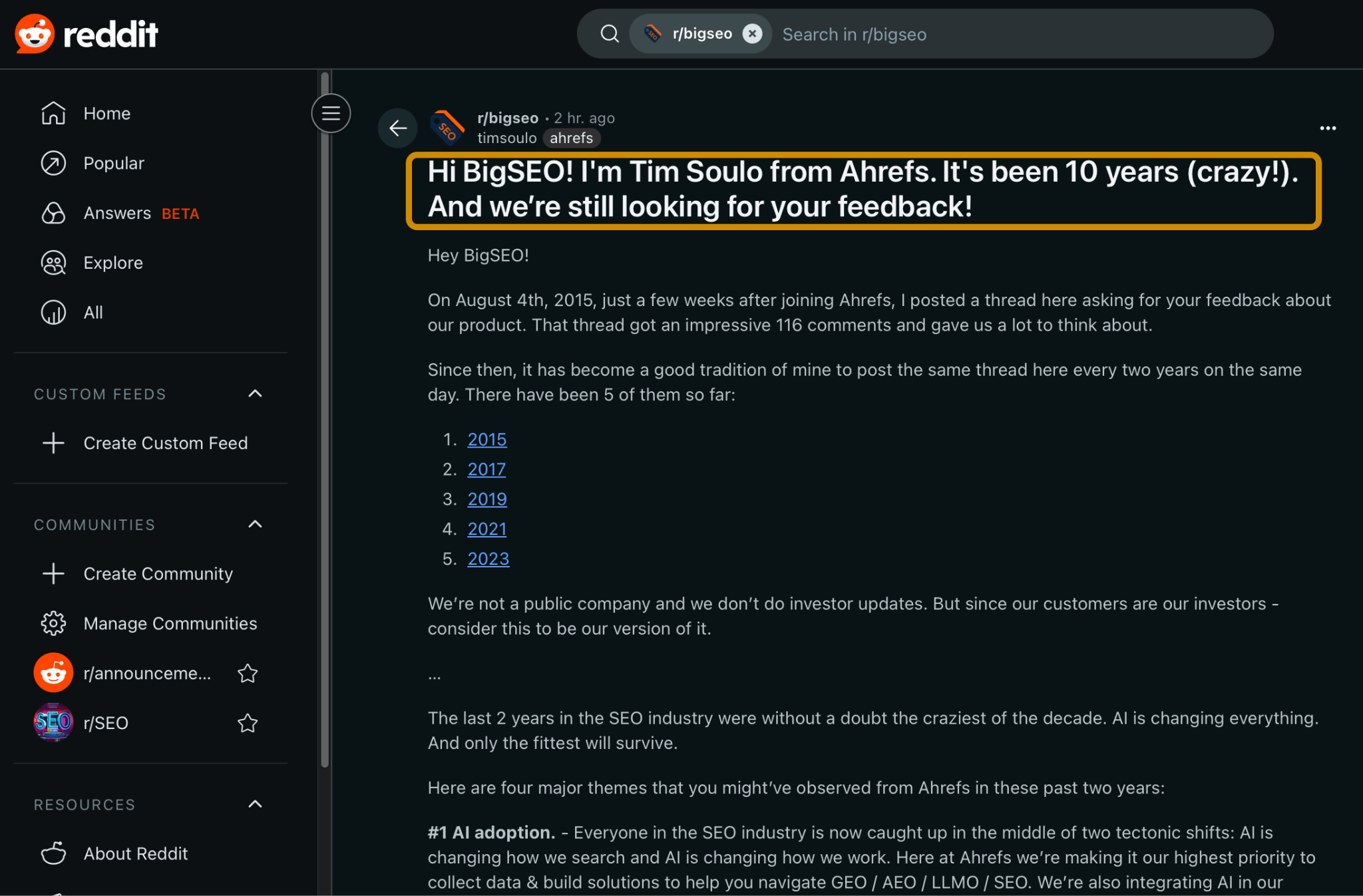
What’s more, bad advice gets downvoted. Good advice rises to the top. It’s social proof built into the search experience, something Google’s algorithm can’t replicate.
Reddit’s unique experience has created the “Reddit modifier” phenomenon—perhaps the clearest symbol of Reddit’s power as a search engine. It means that people type “reddit” right before the thing they are interested in.
To illustrate, this tree chart from Ahrefs’ Keywords Explorer shows the most popular way to ask for vpn recommendations. The ones that include the Reddit modifier appear twice in the top 15.
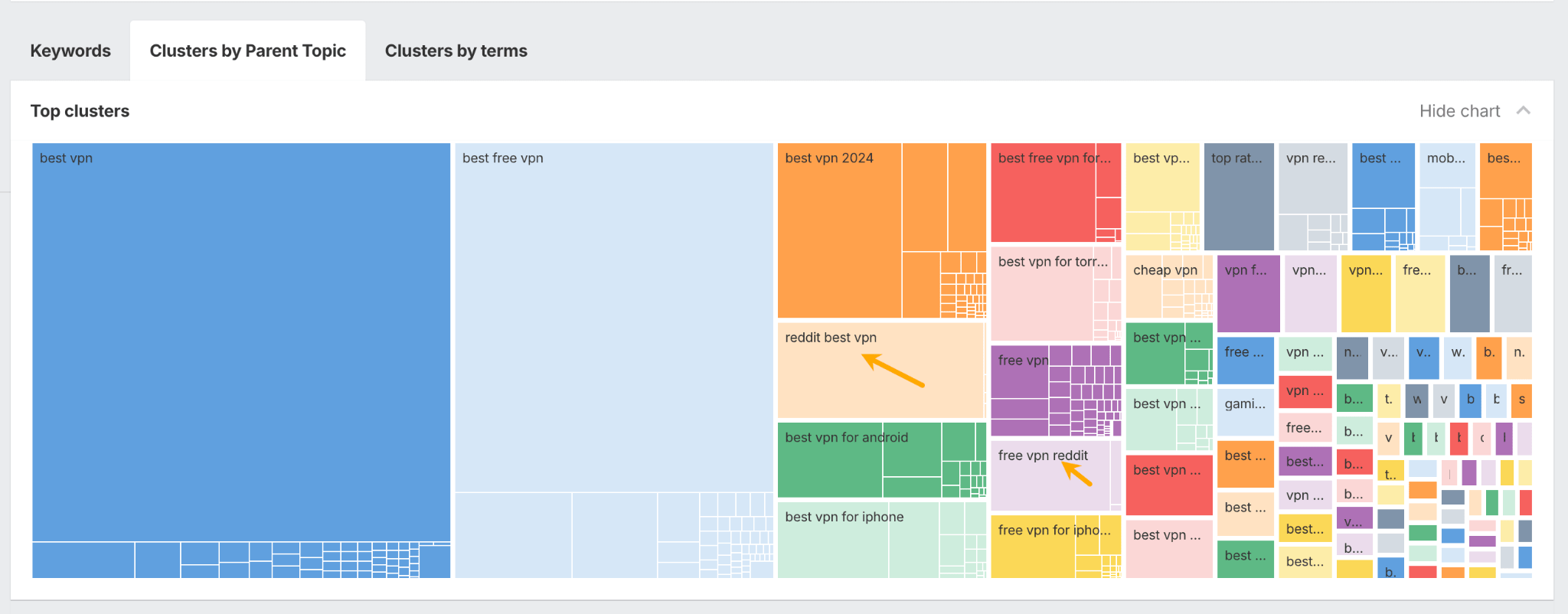
Core optimization principles
Learn the culture before you post anything. Each subreddit has its own rules, tone, and expectations. Spend time reading, understanding what gets upvoted, and how community members interact before you ever consider posting.
Build genuine relationships, not promotional campaigns. Reddit users have finely tuned promotional radar. Instead of pushing your product, become a helpful community member. Answer questions, share insights, and provide value without expecting anything in return.
Participate consistently in relevant subreddits. Find 3-5 subreddits where your ideal customers hang out. Become a regular contributor by sharing useful content, asking thoughtful questions, and engaging in discussions that matter to that community.
Reddit has rolled out a free tool called Reddit Pro that might help you with that. It’s designed to help brands keep up with trending topics and conversations using AI-powered insights and smart keywords. The platform makes it easier to connect with communities through features like post scheduling, crossposting, and hosting AMAs. It also includes built-in analytics to track reach and engagement.
Create content worth discussing. The best Reddit content sparks conversation. Share case studies, ask for feedback on real problems, or present interesting industry data that gets people talking.
Here’s a quick tactic you can use for Reddit: focus on threads that already have visibility in Google Search.
- Go to Ahrefs’ Site Explorer, enter “reddit.com”, and open the Organic keywords report.
- Use filters: positions 1-10, keyword includes (enter phrases related to your site). You can select a preferred location, too.
- Look for relevant keywords with a lot of traffic.
- Add thoughtful, useful answers to these high-traffic threads.
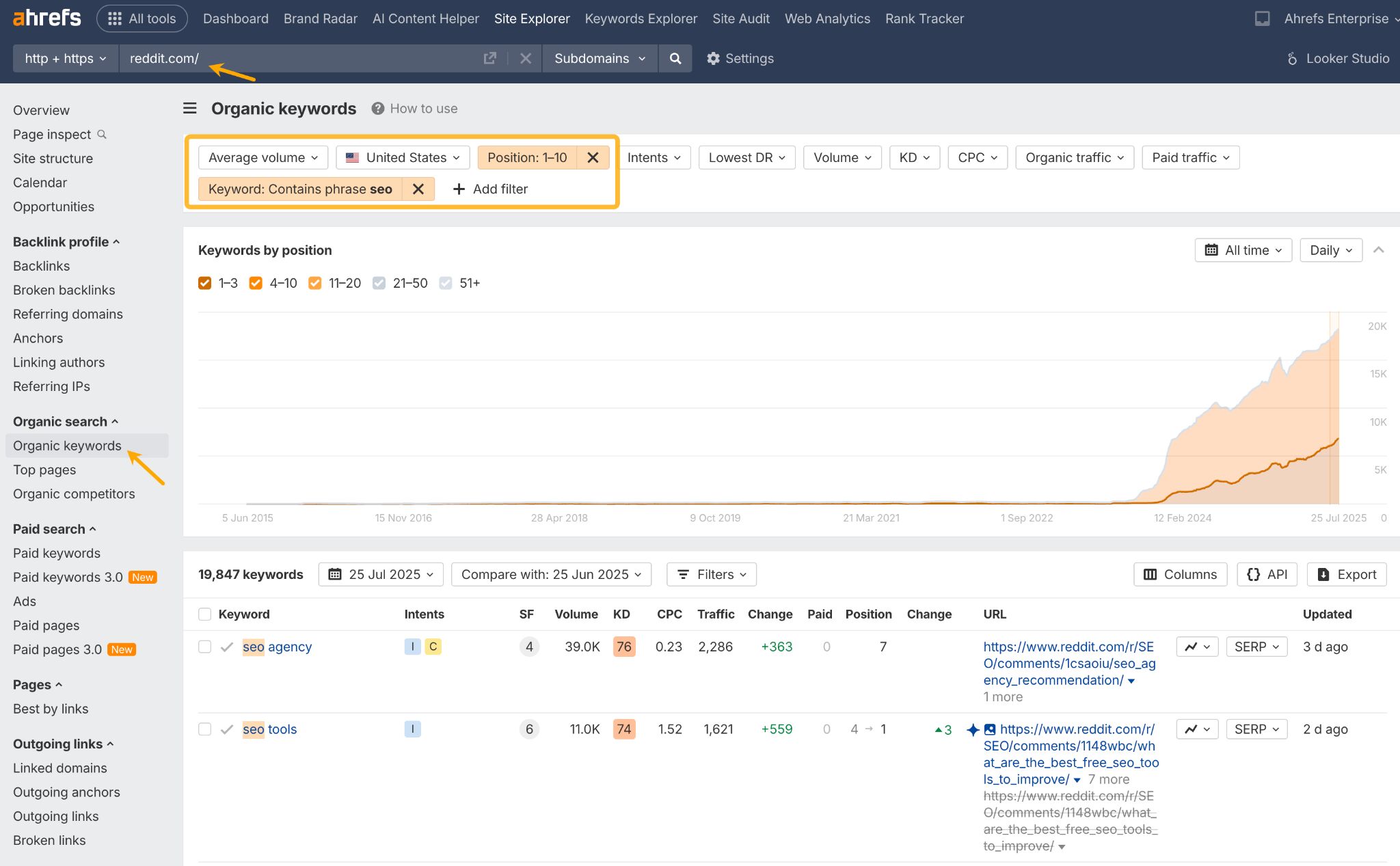
TikTok is the 10th largest website by search traffic in the world (470M visits). Among Gen Z—especially the younger segment—TikTok is increasingly preferred over Google for search, with 62% using it to search for product reviews and recommendations.
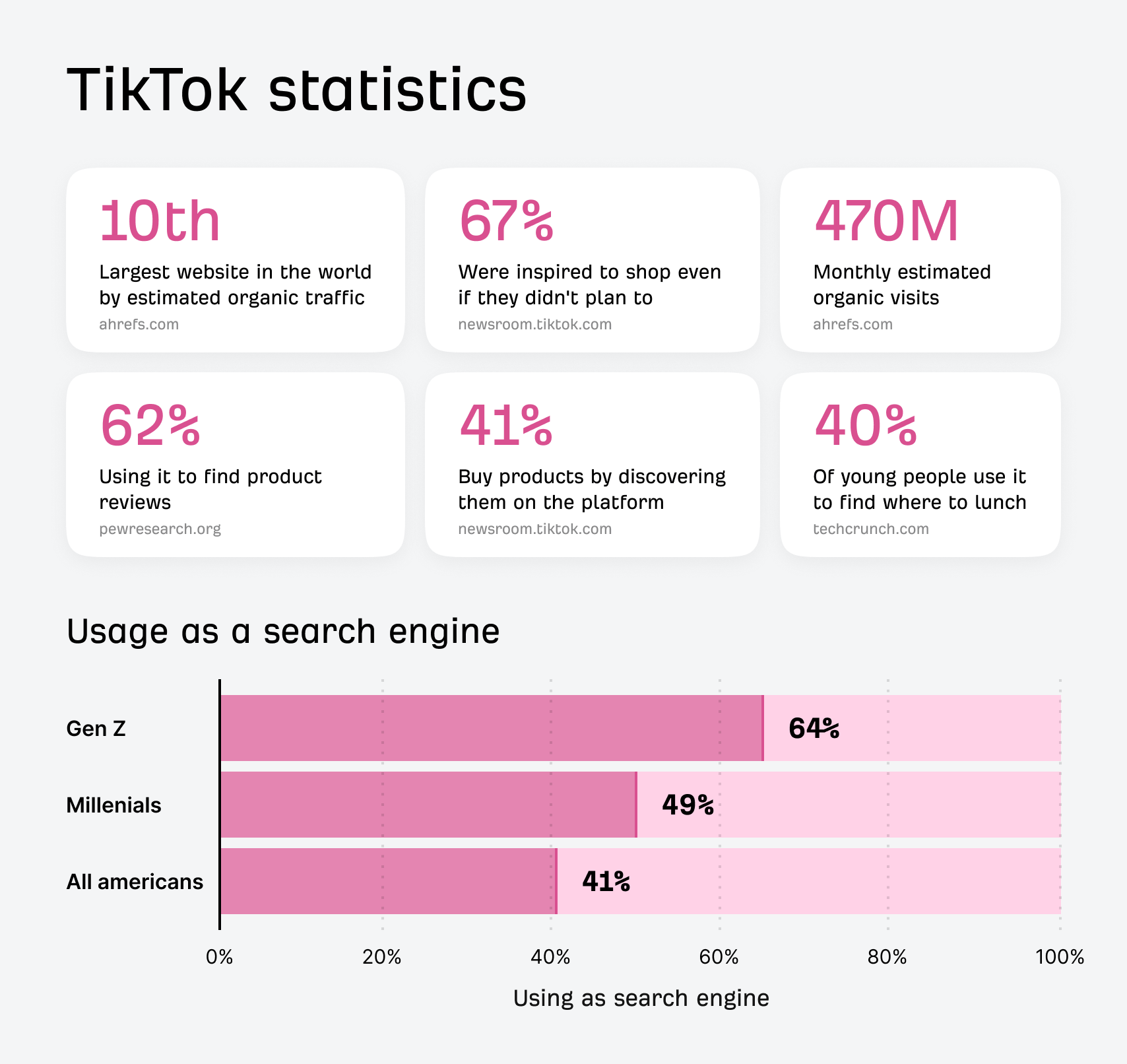
TikTok isn’t just the place for viral dances anymore. It’s become a full-fledged search engine where people discover everything from life hacks and restaurant recommendations to honest product reviews and local tips.
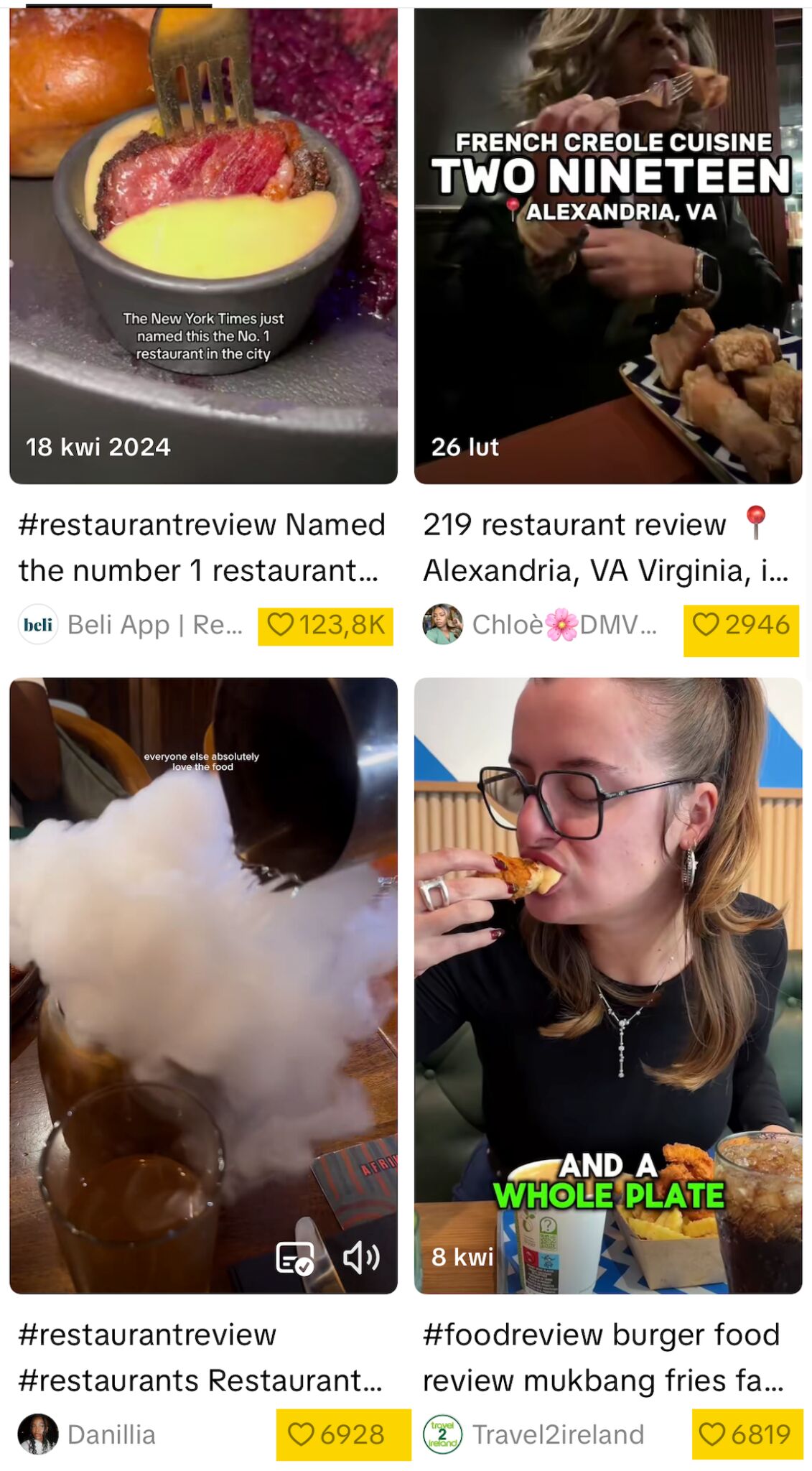
What sets TikTok apart is its focus on real, unfiltered moments rather than perfectly polished content.
Sure, some of the stuff that pops up can be pretty mindless, but that doesn’t seem to hurt the platform. If anything, it might even help. Maybe it’s a sign that TikTok is truly uncensored and open to all kinds of expression…
TikTok has created its own cultural movement with the #TikTokMadeMeBuyIt hashtag, similar to how Reddit users rely on the search term modifier to find exactly what they’re looking for. For many users, this hashtag is a trusted way to find products, making it a go-to search tool, especially for lifestyle, beauty, and tech items.
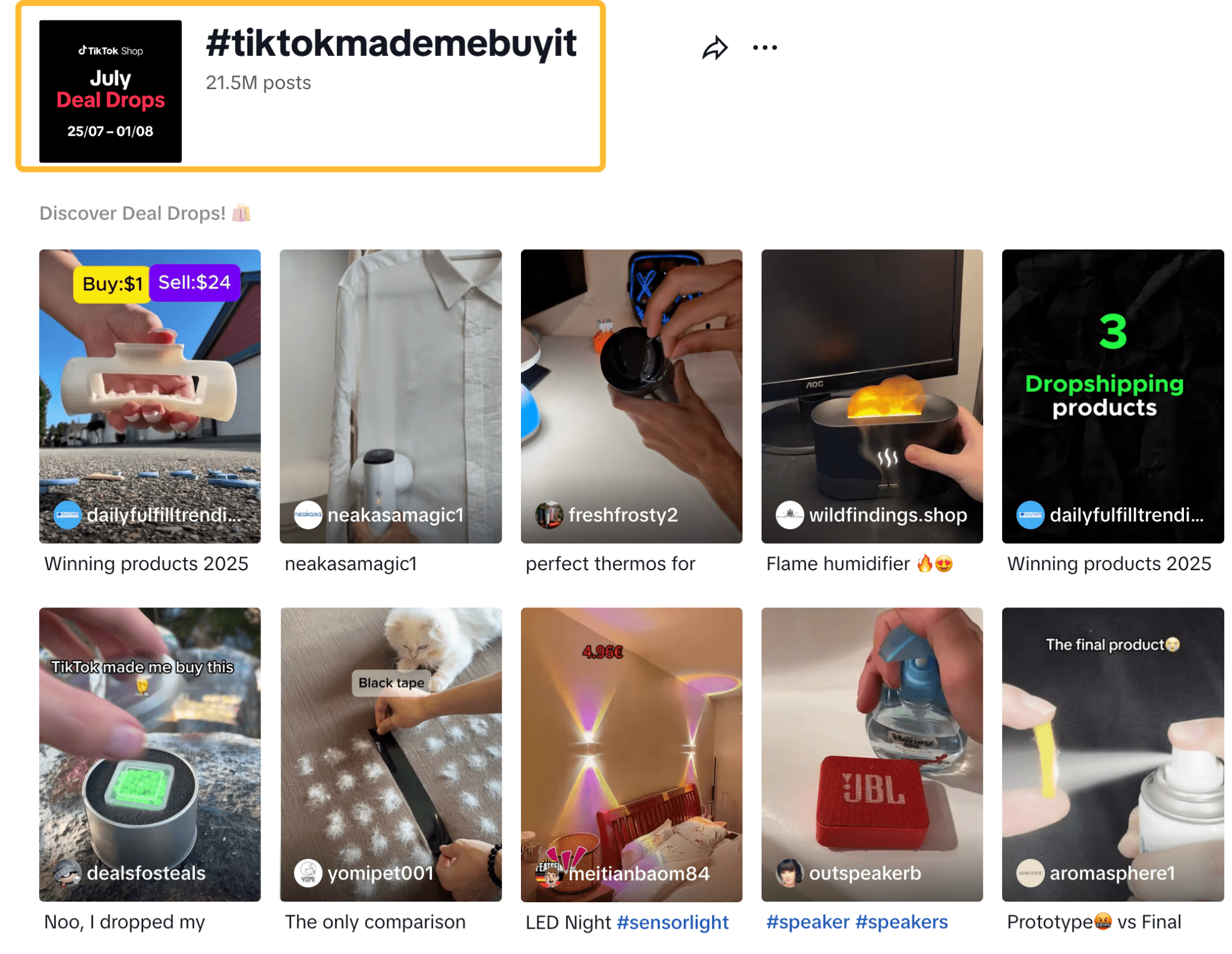
Core optimization principles
The algorithm looks at things like how many people watch your video all the way through, what sounds are trending, and other engagement signals to decide what to show more of.
We’ve got a comprehensive guide that covers TikTok SEO from the ground up, including:
- Understanding TikTok’s search algorithm and how it differs from Google’s approach to ranking content.
- Keyword research for TikTok using the platform’s search suggestions, trending hashtags, and competitor analysis techniques.
- Optimizing your content, including captions, hashtags, sounds, effects, and video descriptions for maximum visibility.
- Content strategy frameworks for creating authentic, engaging videos that align with TikTok’s culture while driving business results.
- Measuring TikTok SEO success with the right metrics and KPIs that actually matter for business growth.
Check out our in-depth TikTok SEO guide for the full step-by-step process.
Pinterest engages 553 million active users monthly, conducting 2 billion monthly searches. It has a strong Gen Z user base, where the majority of users discover new brands and products through the platform.
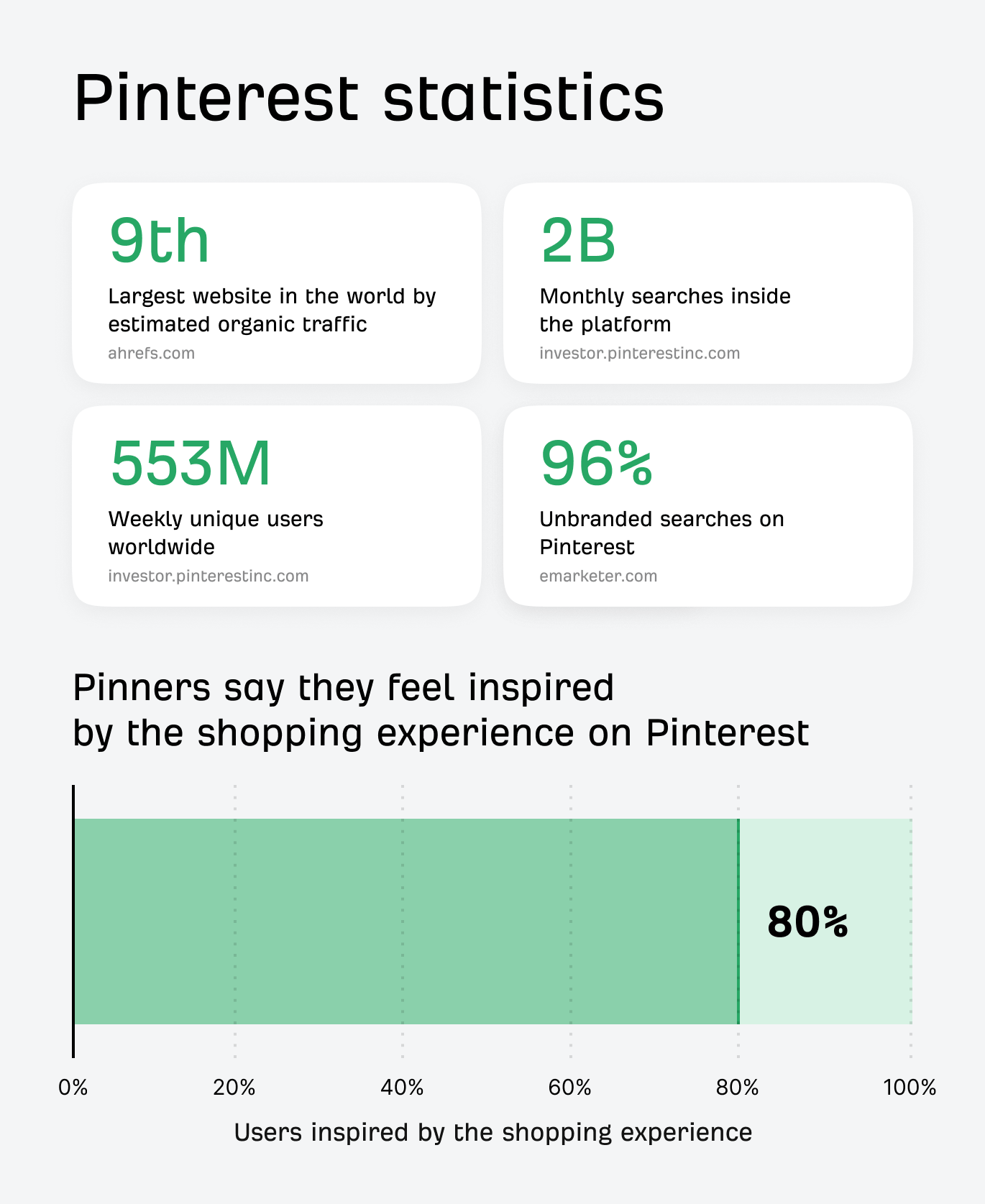
Google answers, “What is farmhouse decor?” Pinterest shows 50 different ways to achieve the look, with real examples you can save and reference. And, instead of individual, disconnected search results, Pinterest gives you themed boards and related pins that work together—like having a personal stylist or interior designer.
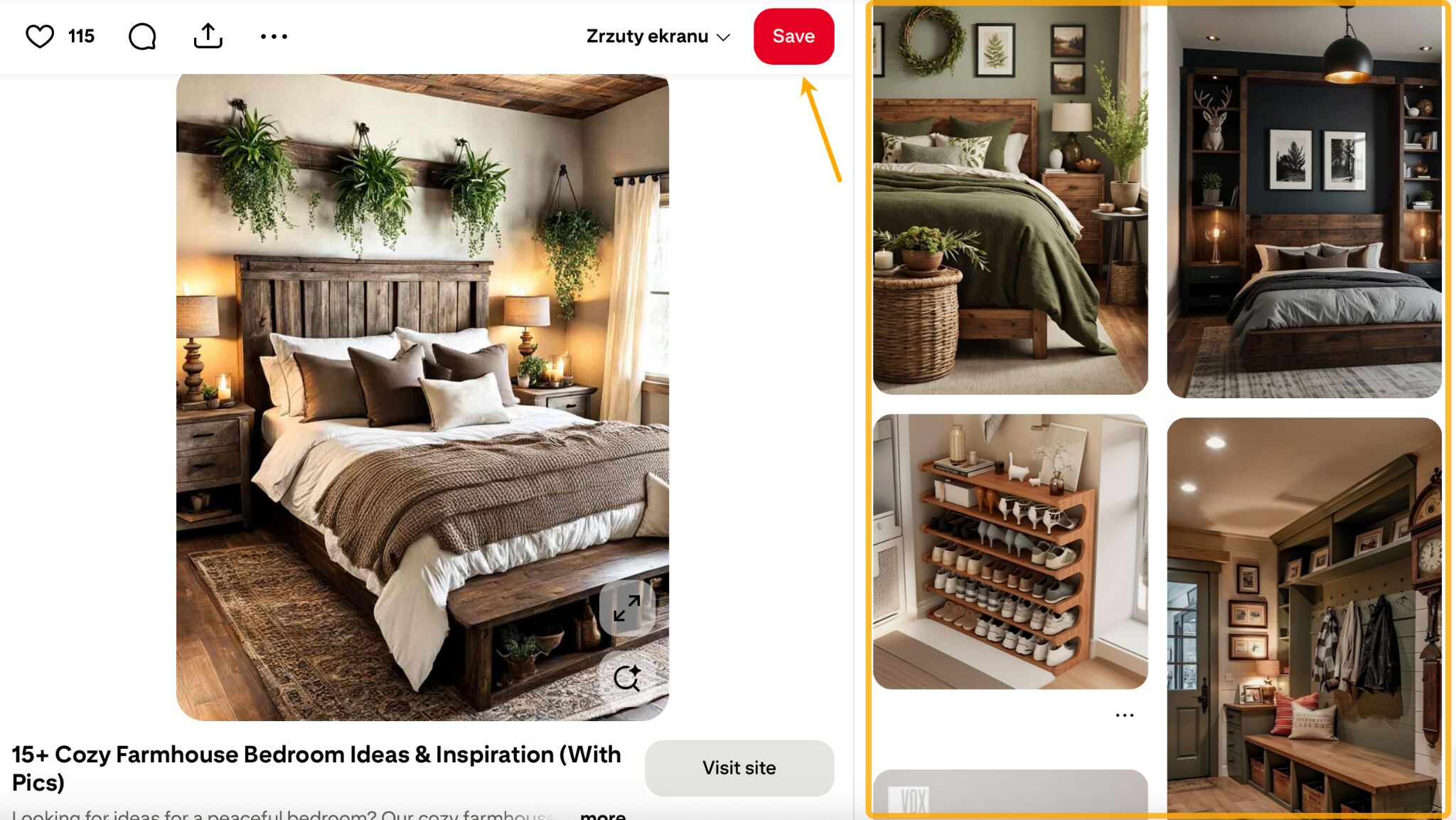
Pinterest stands out as the platform where people go to plan their future. Whether it’s organizing a wedding, redesigning a home, planning weekly meals, or gathering style inspiration, users come with a clear intent to act.
Core optimization principles
Design vertical, eye-catching pins. Use 1000x1500px images with a 2:3 ratio, bold colors, and minimal text overlays. Add descriptive alt text to boost impressions and clicks.
Post fresh pins regularly. Prioritize new content over repins. Aim for 2–3 high-quality fresh pins daily, with multiple designs for each blog post.
Use keywords strategically. Place your main keywords in the first 40 characters of your pin titles. Include 2–3 related terms in descriptions and optimize board names with specific phrases.
Enable rich pins on your site. Add schema markup so Pinterest automatically pulls metadata for articles, products, or recipes—enhancing your pins’ appearance and credibility.
Create pins that get saved. Focus on content that encourages users to save—it’s Pinterest’s top signal for boosting reach and long-term performance.
Follow the 40-40-20 rule: 40% evergreen, 40% seasonal, 20% experimental. Start pinning for holidays and events 2–3 months in advance.
Here’s a quick Pinterest tip: find search terms with high demand and visual intent. If these keywords are popular on Google, there’s a good chance they’ll also perform well on Pinterest.
- Go to Ahrefs’ Keywords Explorer and click on Explore entire database.
- Use filters: Target: pinterest.com in top 10, Intents: non-branded.
- To refine the results, use Presets or the Include filter, where you can add general keywords related to your business.
- Look for relevant keywords with high search volume (SV).
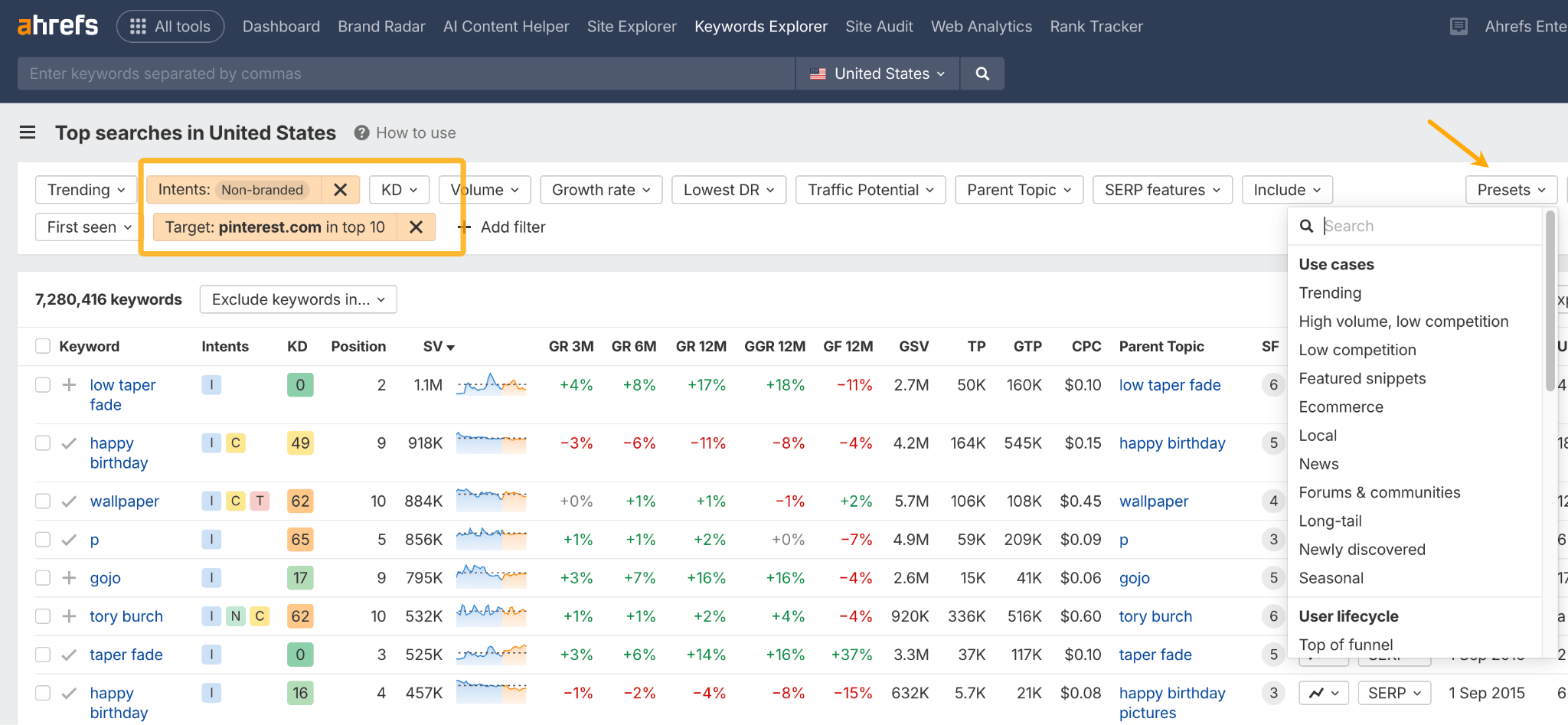
Starting with SEvO can feel overwhelming when you’re looking at five different platforms, each with its own rules and audience behaviors. The key is approaching it strategically rather than trying to be everywhere at once.
Start with your audience, not the platform
Before you create a single piece of content, get crystal clear on who you’re trying to reach. Create detailed buyer personas that go beyond demographics—understand their problems, research habits, and where they naturally spend time online.
Tools like Ahrefs’ Keywords Explorer and SparkToro can reveal what your audience is actually searching for, is the demand growing or shrinking, and which platforms they frequent. Don’t assume where they are, let the data guide your decisions.
In Ahrefs, you can start by asking AI for topics related to your business.
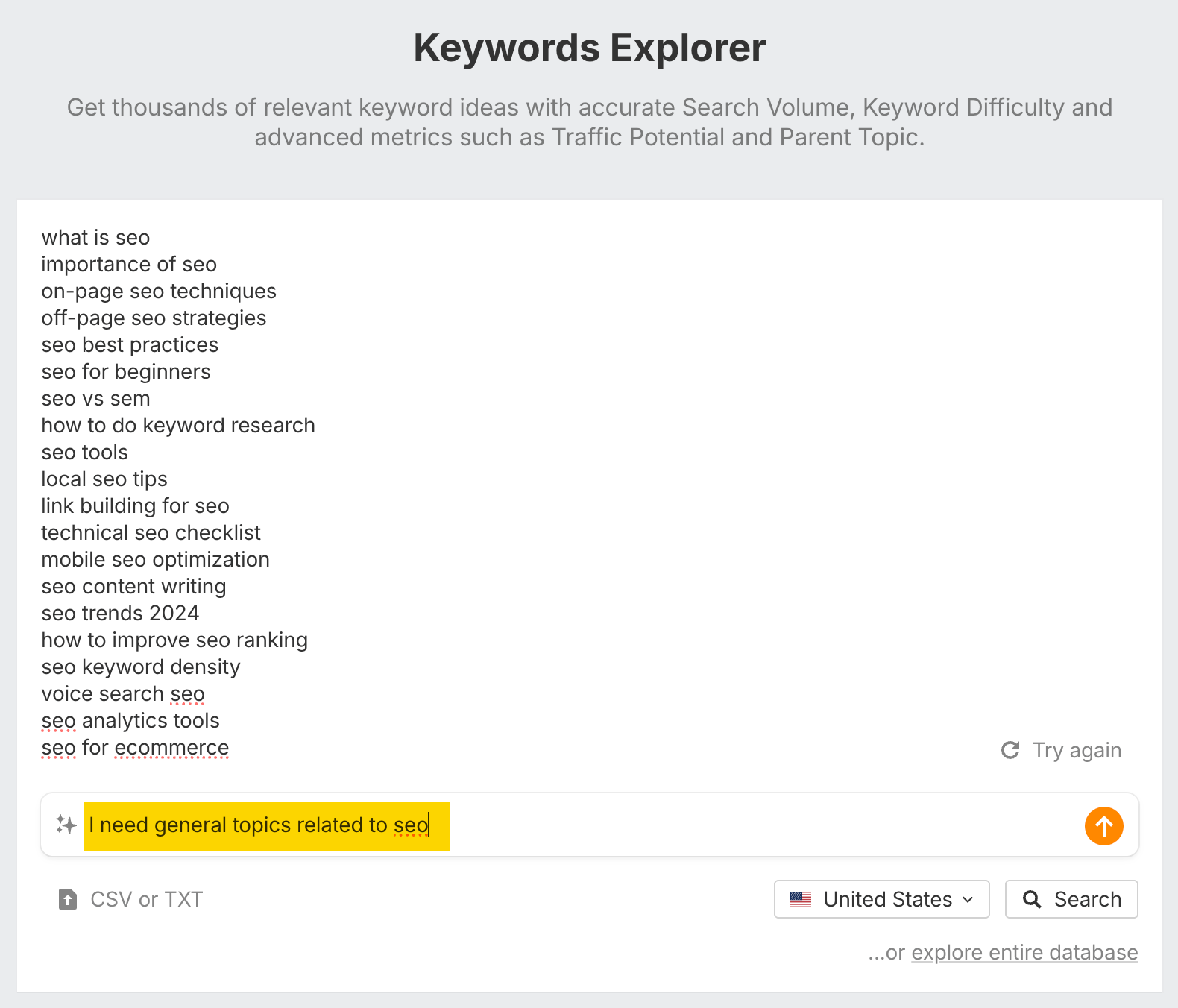
Next, the Matching Terms report gives you a broad list of search terms people use to find businesses like yours. The Search Volume column shows what topics your audience cares about most, while the Growth (GR) column reveals whether interest in those terms has risen in the last 3 to 12 months.
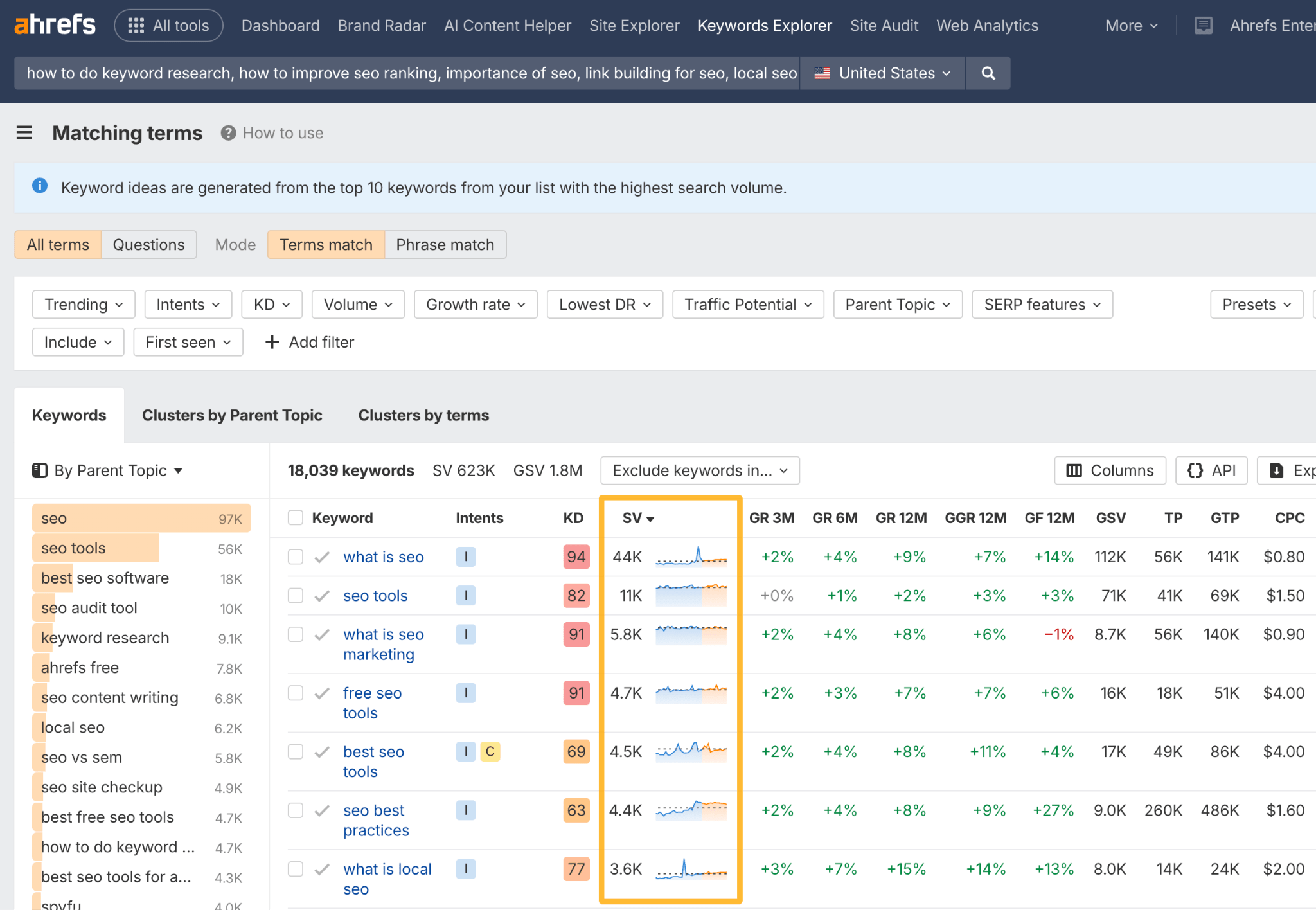
SparkToro, on the other hand, helps you find out which social media platforms your target audience spends the most time on.
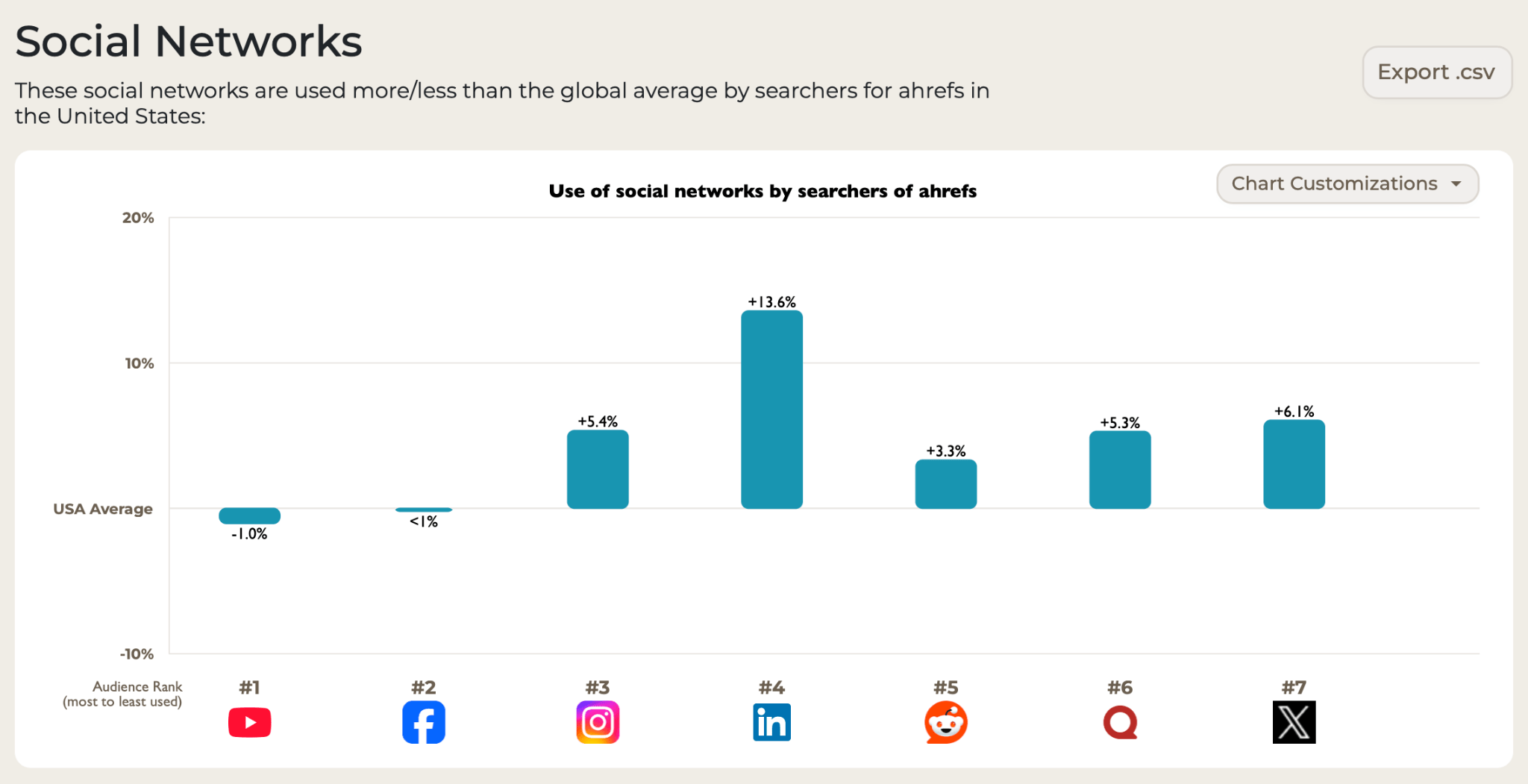
Study what’s already working
Spend time browsing each platform to understand the landscape. What type of content is your competition creating? What’s getting engagement? More importantly, what feels authentic to that platform’s culture?
Ahrefs has data on that, too. If you open Site Explorer and plug in your competitor’s domain, you will see which of their content gets the most visitors from Google (Top pages report), and which content makes them authoritative in the industry through earning backlinks (Best by links report).
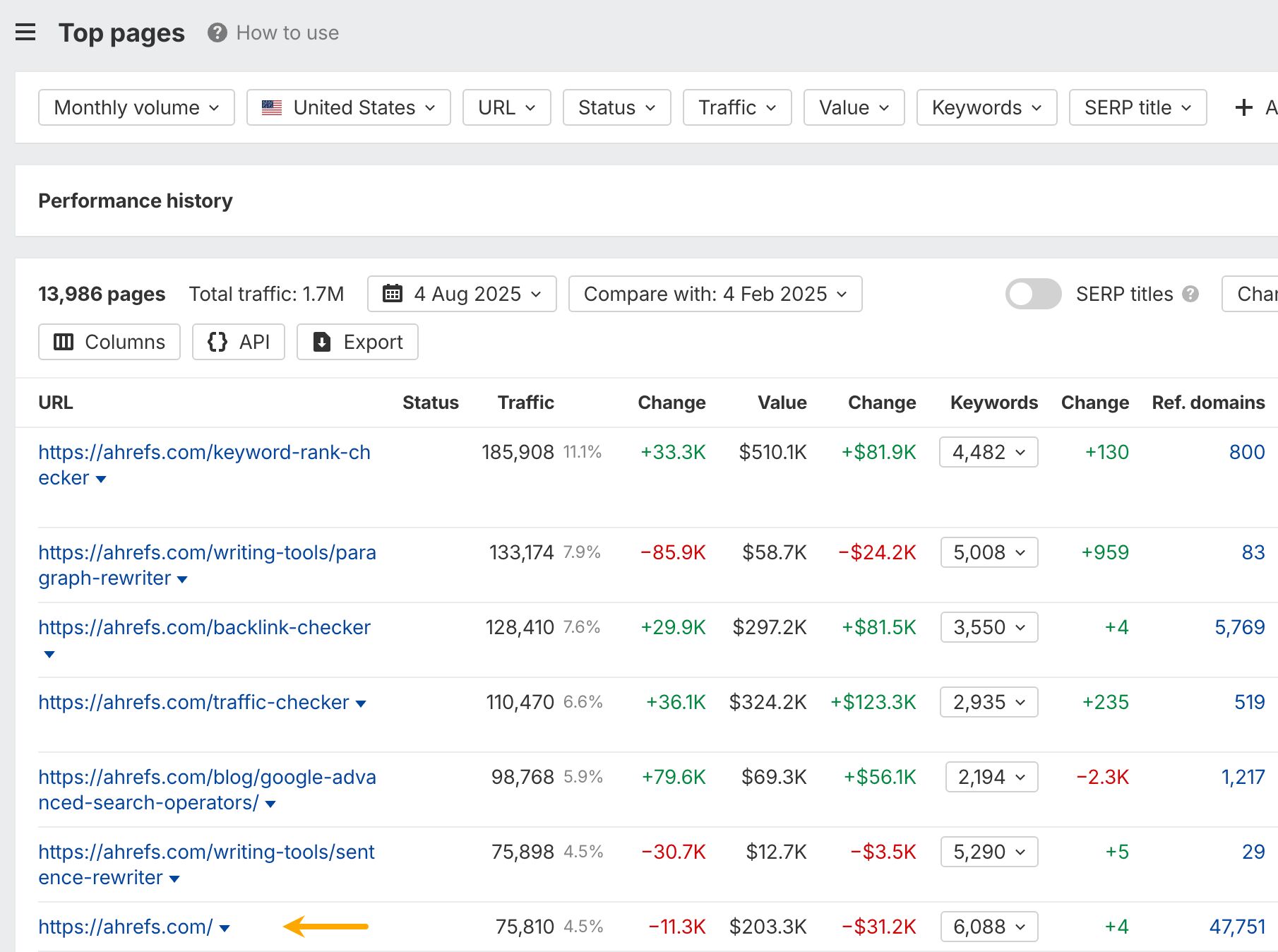
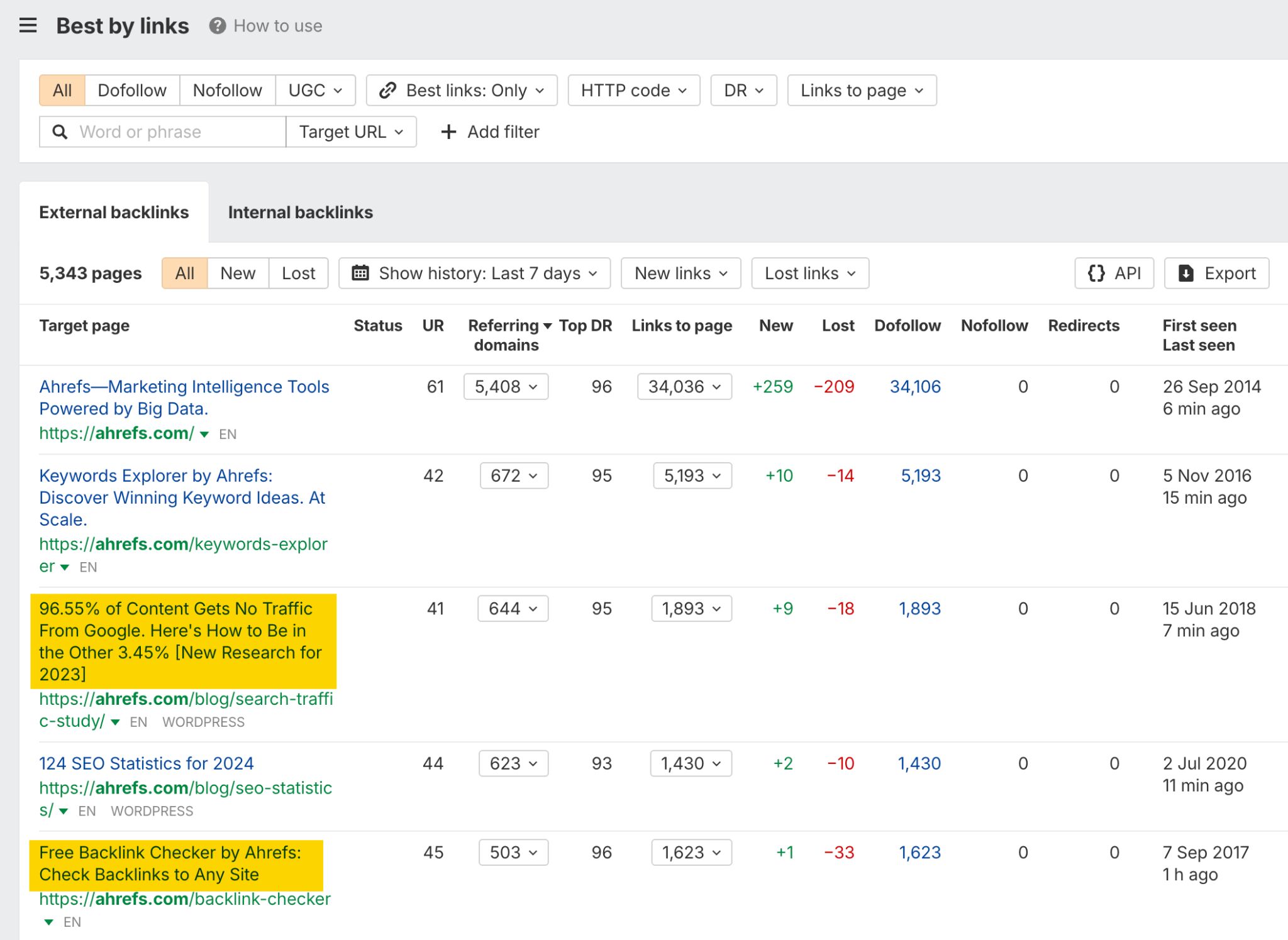
Match your product to the right platform and behavior
The goal is to create the right content for each search platform.
| Product/service type | Best performing channels | Why It works |
|---|---|---|
| Complex or high-ticket products (e.g., B2B software, cars, enterprise solutions) | Google, YouTube, LinkedIn | People need detailed information and want to build trust before making big decisions. |
| Visual and lifestyle products (e.g., fashion, home decor, food, travel) | Instagram, Pinterest, TikTok | Discovery happens through inspiration and visual browsing. |
| Local services (e.g., restaurants, healthcare, home repair) | Google My Business, voice search optimization, local social media | People search for “near me” solutions and rely on visibility in local results. |
| Trending or impulse purchases (e.g., beauty products, gadgets, wellness items) | TikTok, Instagram Reels, influencer collaborations | Spontaneous discovery drives immediate action. |
The traditional metrics you’ve used for each platform still matter. SEO still looks at keyword rankings and backlinks, social media still values likes and follows, and so on. But with AI in the mix, there are new signals worth paying attention to.
What still matters
SEO basics still count. Things like where your site ranks for keywords, how much organic traffic you’re getting, the number of backlinks you have, and your domain authority all show how well you’re doing in search. You can track core metrics and the advanced ones with Ahrefs’ Site Explorer and Rank Tracker.
Social media numbers are still key. Growing your audience, getting likes, shares, comments, and longer watch times, plus how many people see your content—all of these are solid signs of how you’re doing on social platforms. All social media platforms have native built-in analytics, but you can also use tools like Buffer to check all metrics in one place.
What’s new (thanks to AI)
AI mentions. AI mentions are instances where AI assistants include your brand or products in their answers, whether or not they link to you. The more often your name appears, the more likely users are to consider your product or service—it’s the new “visibility economics”.
You can track AI mentions with tools like Ahrefs’ Brand Radar. It’s also worth adding your competitors to see how your visibility stacks up over time.
First, plug in your and your competitors’ brand names. You can use the AI feature to suggest competing brands:
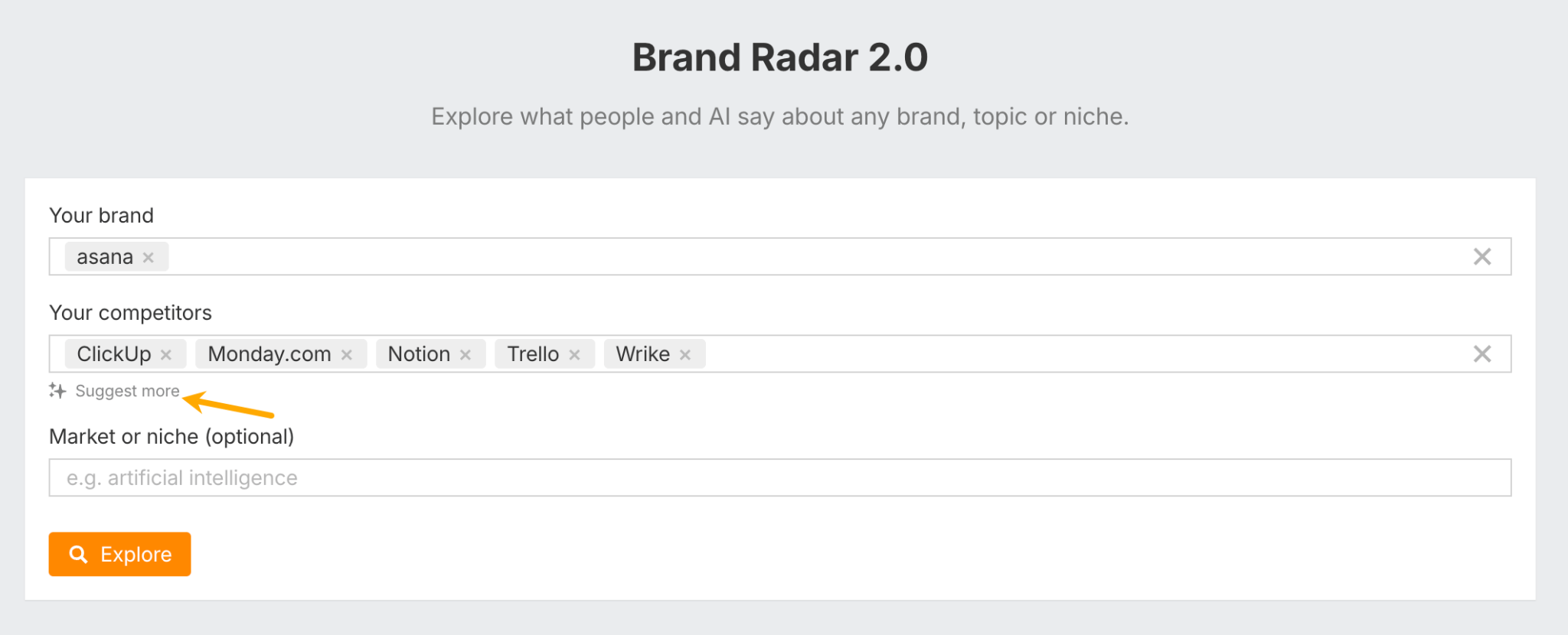
Next, you will see a dashboard with a competitive analysis of your brand’s visibility including:
- AI share of voice: How often AI assistants and Google’s AI Overviews mention your brand compared to your competitors.
- Search demand: How many times people searched for your brand on Google last month.
- Web visibility: The total number of times your brand was mentioned anywhere on the internet.
Use the charts to compare your brand’s visibility with competitors and track how often AI responses mention your brand over time.
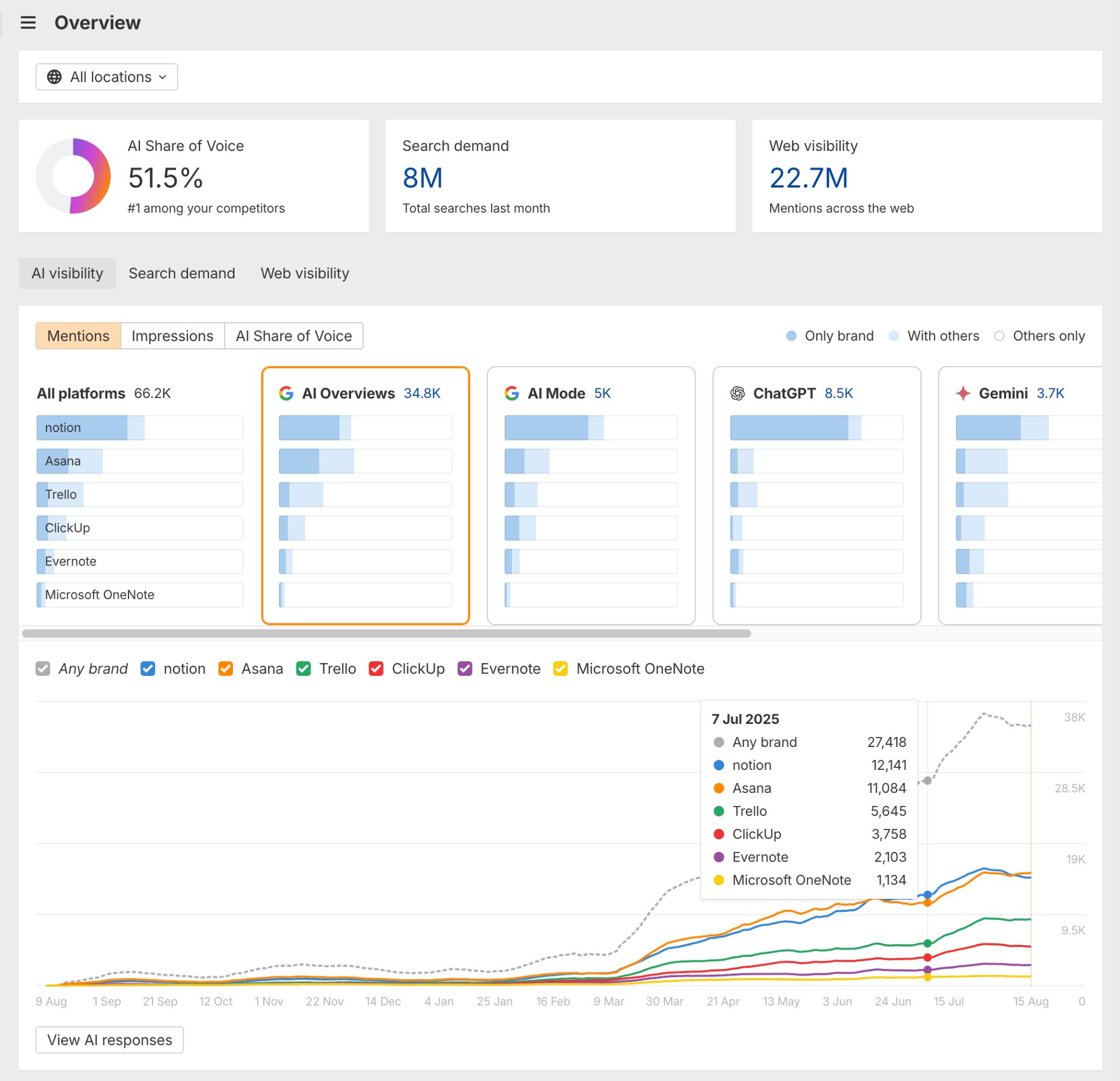
Apart from mentions, Brand Radar will also show you:
- Impressions: mentions weighted by Google search volume to estimate potential exposure. Your competitor may have more mentions, but you may have more reach.
- AI share of voice: percentage of brand impressions out of the total impressions for responses that mention any tracked brand.
You can also track AI mentions within a specific topic. For example, I can check for Mailchimp’s AI share of voice compared to competitors, but only as a social media tool (which is their lesser-known feature). Interestingly, Mailchimp wins across the board, except for Google’s AI Mode.
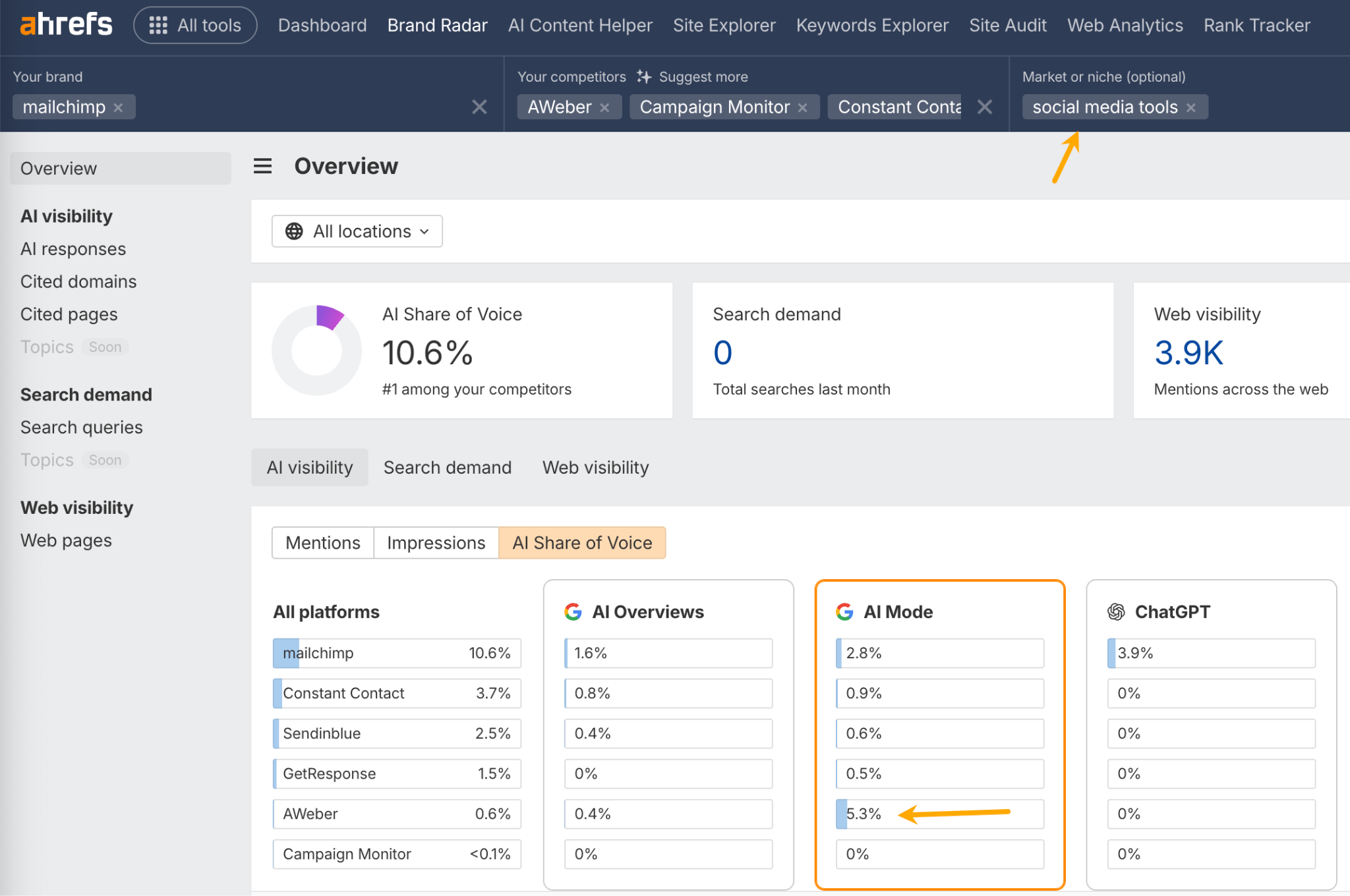
AI citations. AI citations are instances where your brand or content is referenced in AI-generated responses, such as those from ChatGPT or Google’s AI Overviews. These citations signal your visibility and influence in the AI landscape—the more often you’re cited, the stronger your presence in this new information economy.
If you want a quick glance at your citation performance, head on over to Site Explorer and plug in your domain.
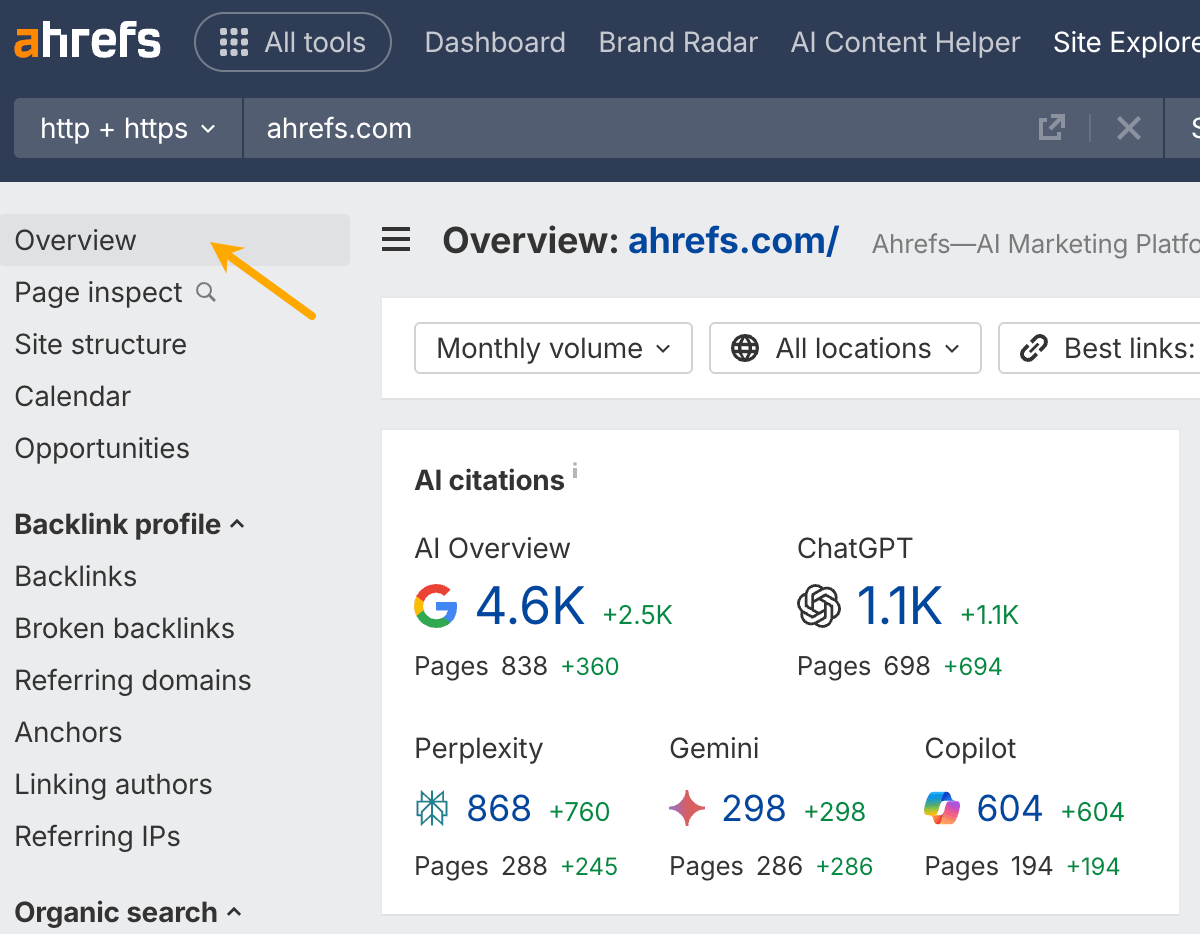
Click on the citation number to see the details in Brand Radar (which pages have been cited and in what context).
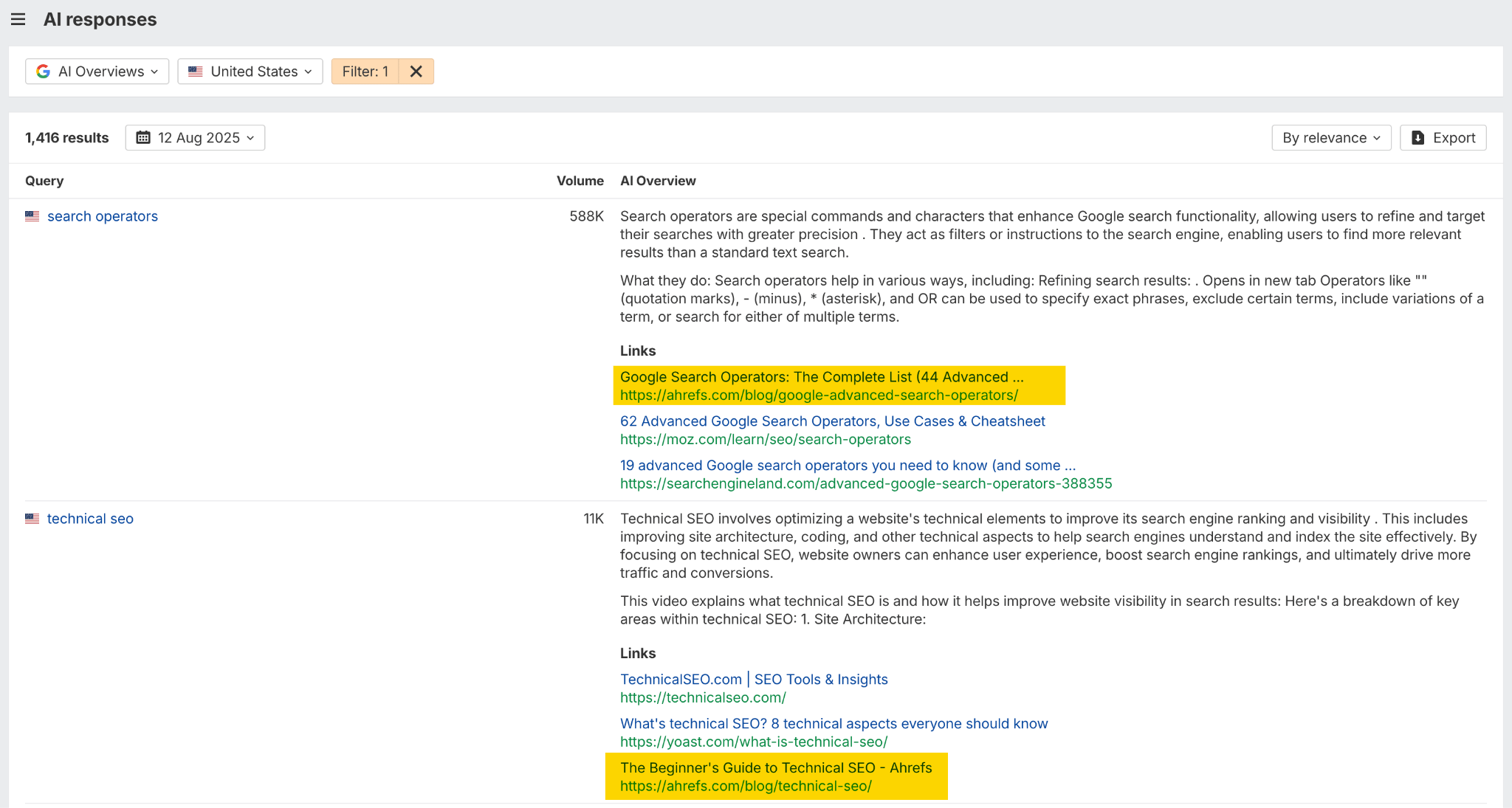
You can also use this data to figure out what kind of content AI tends to pick up on, and then create more of that.
Keep in mind that search everywhere optimization isn’t anti-SEO—everything works together in a connected ecosystem.
Let me illustrate that with a few examples.
YouTube videos rank in the top 10 for about 8.3B keywords in the US (that’s about 27% of all the keywords in our database; keywords >100 monthly searches).
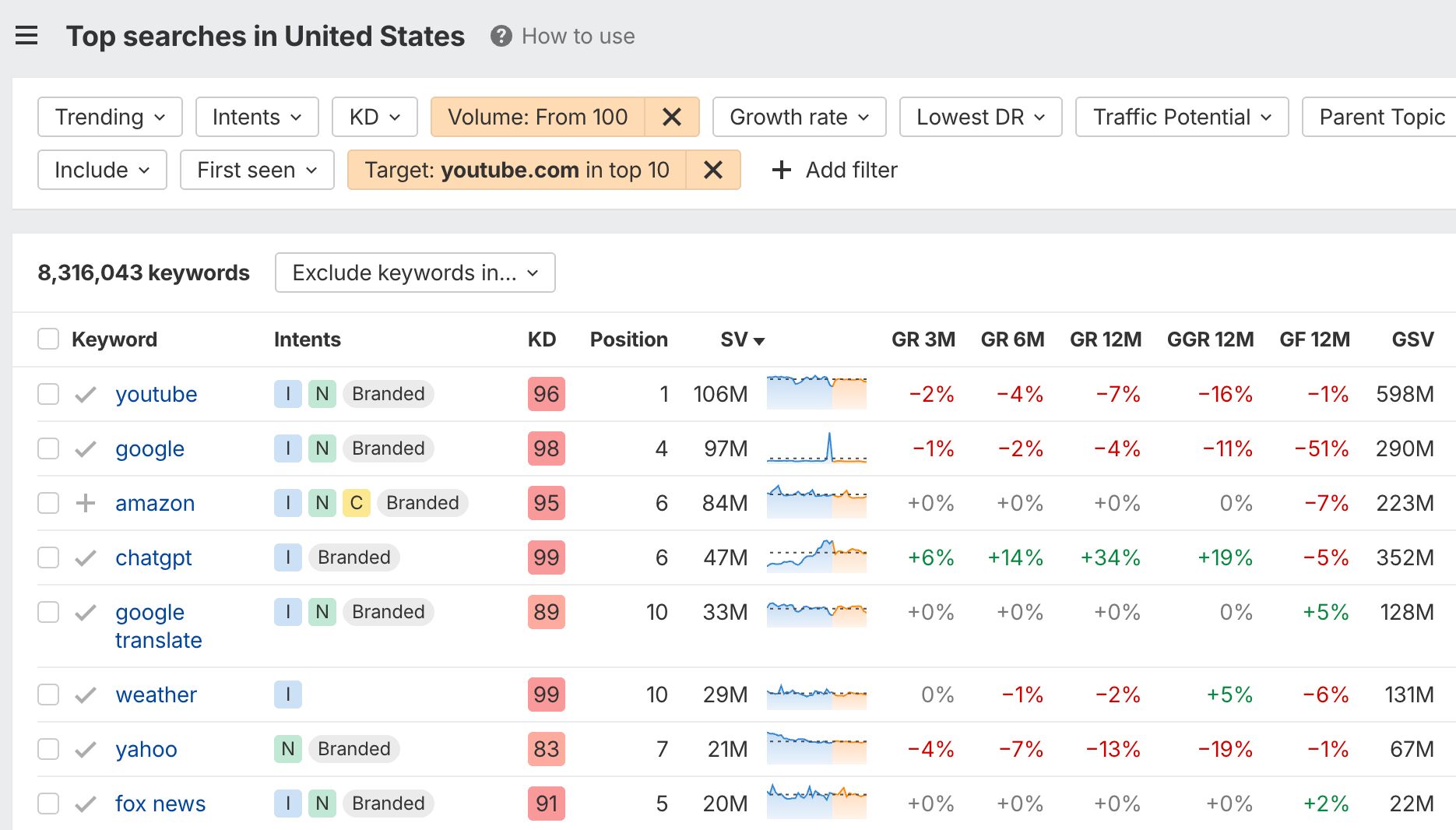
ChatGPT pulls results from Google when it tries to “ground” answers. In this experiment, we saw strong correlations—around 90%—for some queries, and much lower ones, around 8%, for the long-tail queries we analyzed. 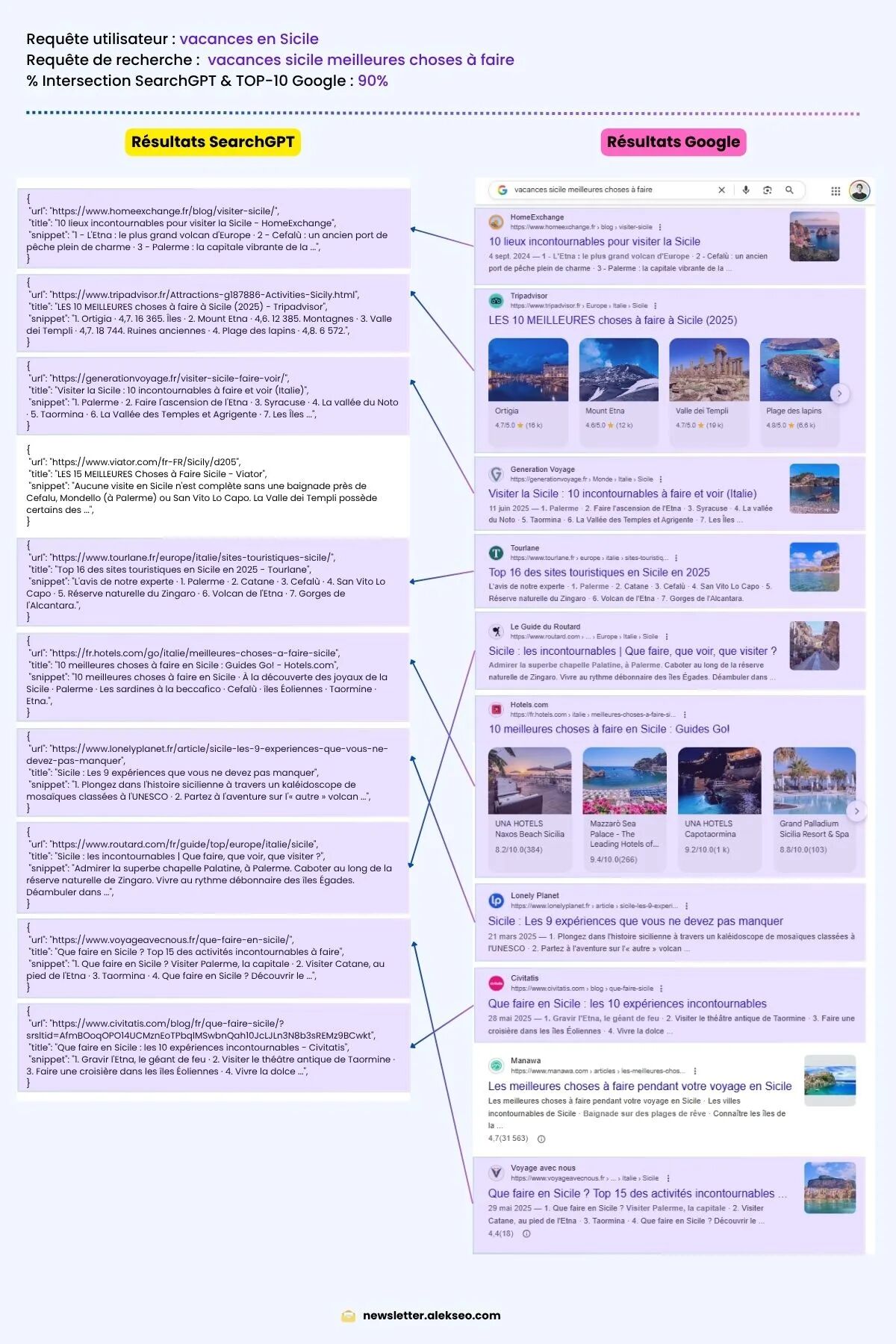
Reddit ranks in the top 10 for over 10.6B keywords in the US (that’s almost 35% of our database of keywords with volume over 100 searches).
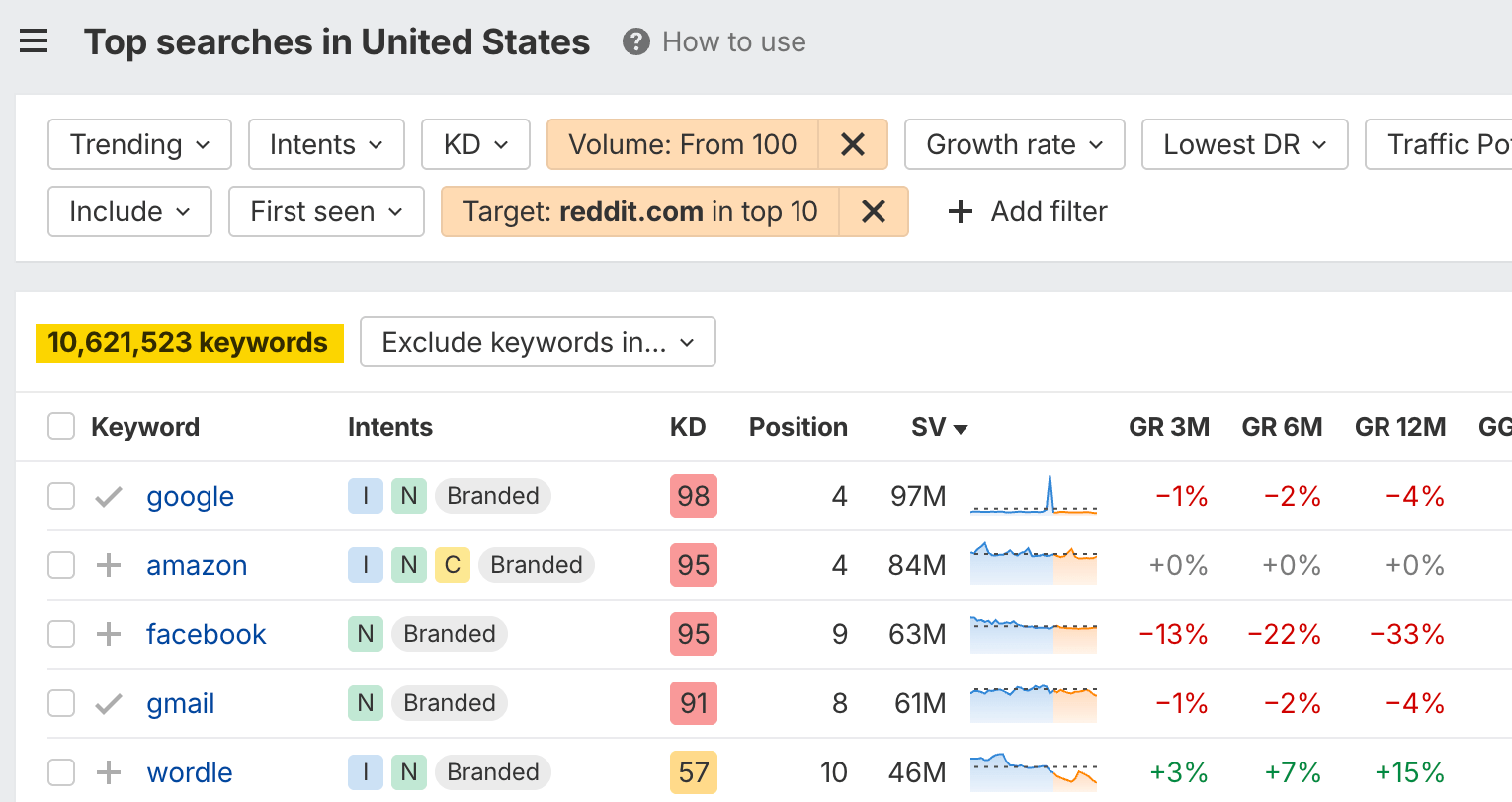
Products discovered on one platform often trigger research on others—someone might find you on TikTok, research you on YouTube, and then Google your brand name.
For example, when Duolingo announced the death of the Duolingo mascot during a viral campaign in February 2025, the search volume for the term “duolingo” peaked to a new all-time high, and so did the branded traffic to the site (see charts below).
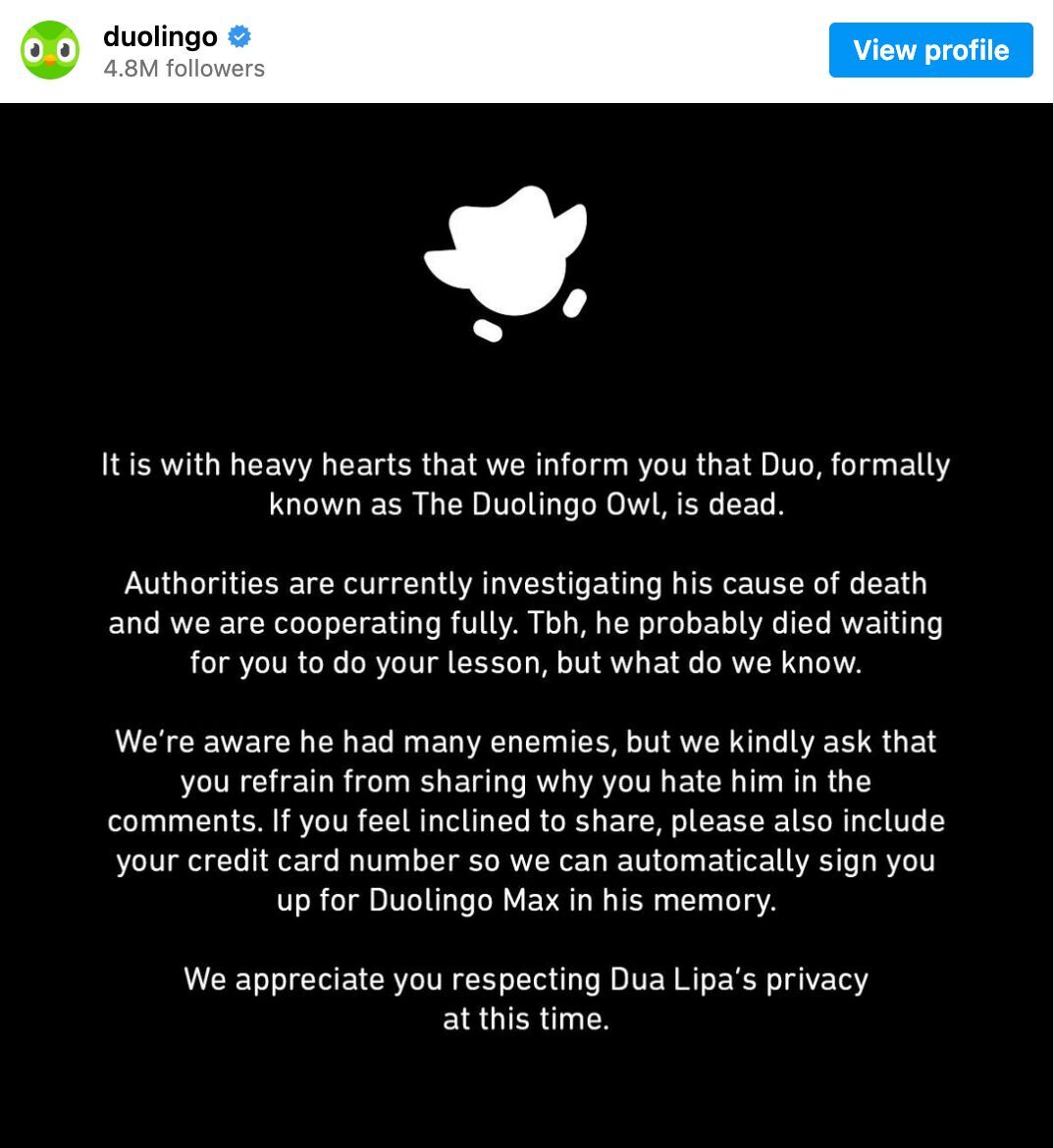
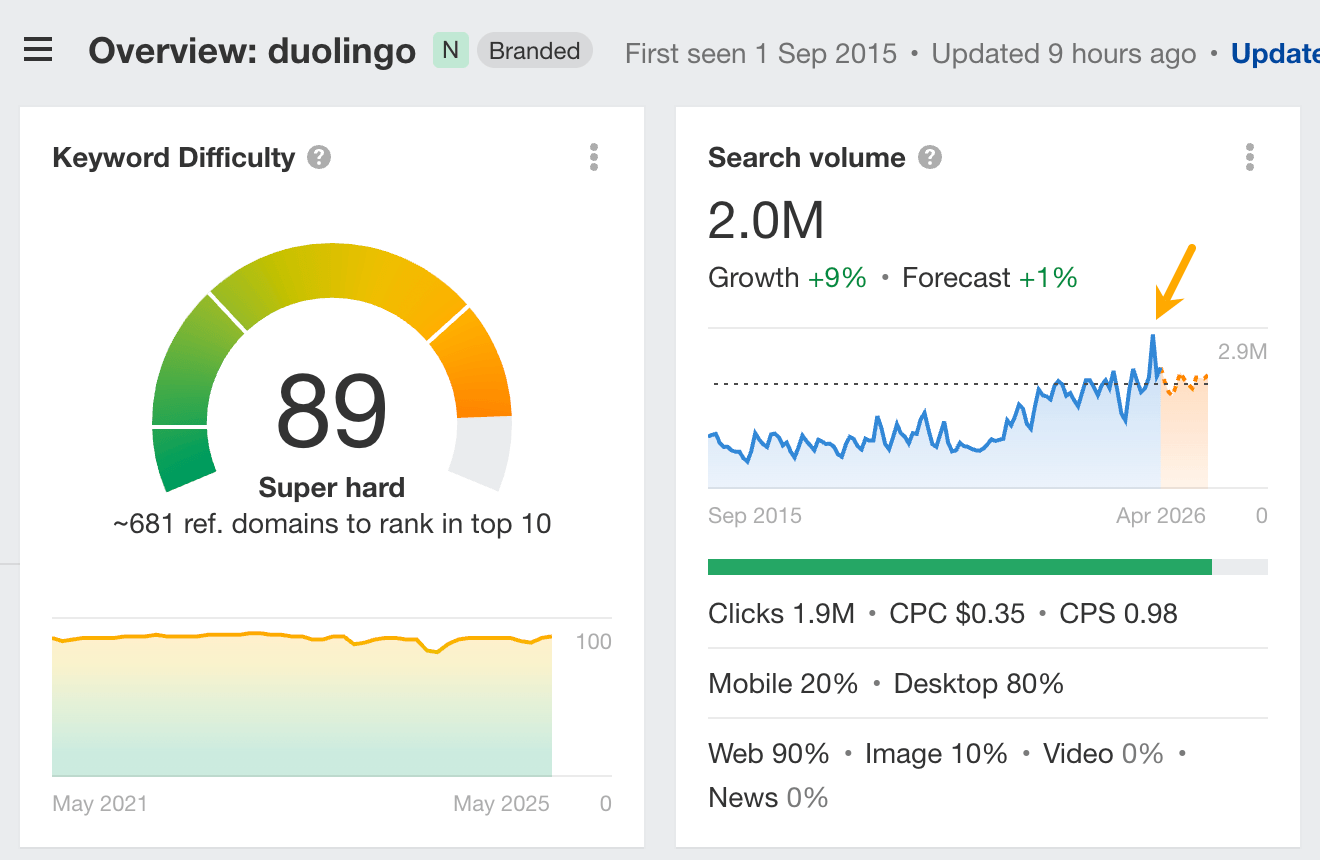
There’s also Instagram. Photos, videos, and Reels now appear directly in Google search results alongside traditional web content.
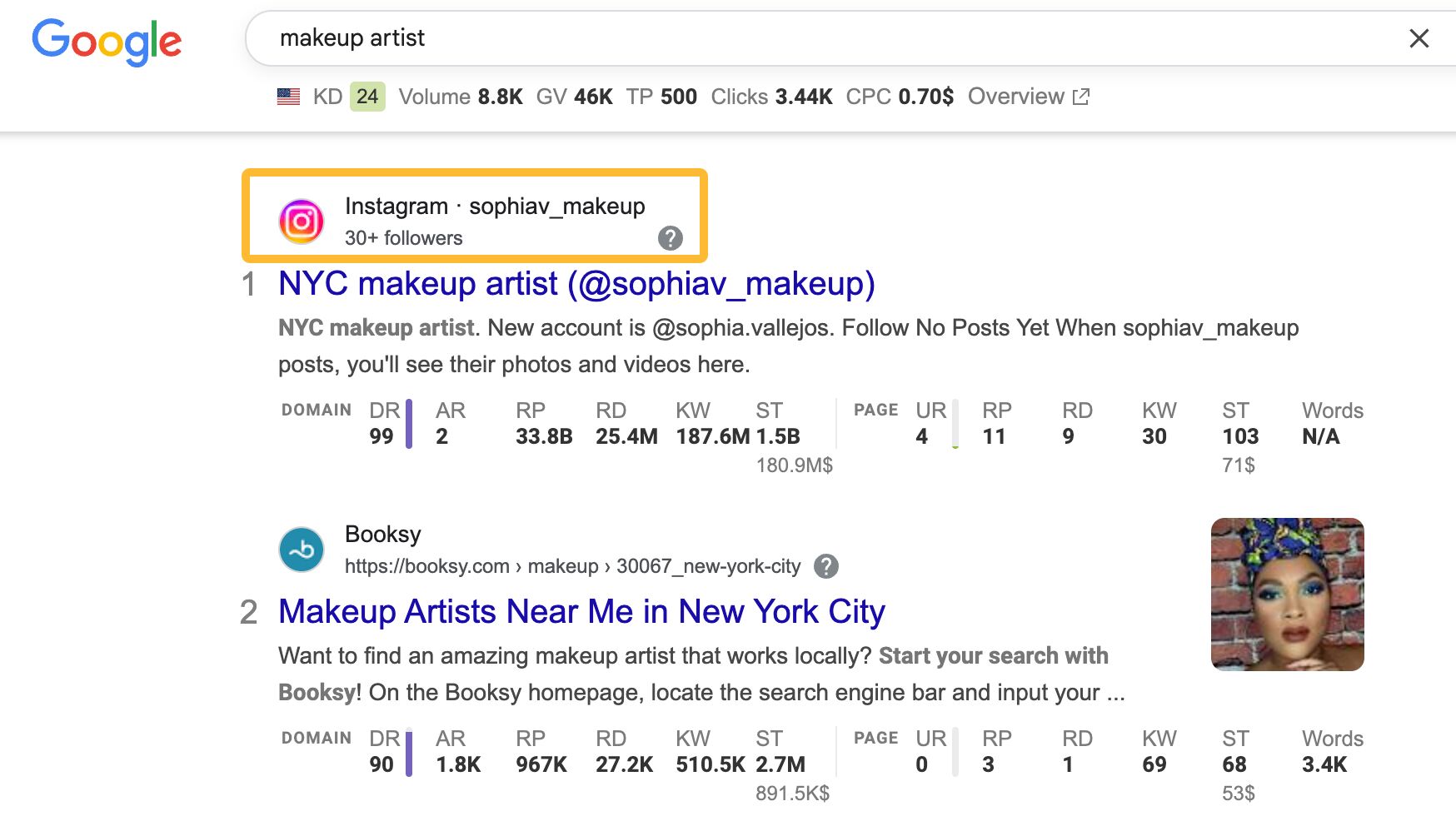
SEvO is like a modern guide to building a strong reputation. It makes sure people can easily find you, trust you, and remember you, no matter where they look online. This helps your brand grow and stay strong over time.
Final thoughts
These days, people use lots of different places to find and learn about products. They might skip Google completely. For example, someone could see you on TikTok, check reviews on YouTube, make sure you’re trustworthy on Reddit, and only then search your name on Google.
Google still matters—but it’s no longer the only place people search. SEvO makes sure you’re easy to find on all the platforms your audience uses, from TikTok and Pinterest to AI assistants, and that you show up in a genuine, helpful way wherever they’re looking.
Got questions or comments? Let me know on LinkedIn.



